
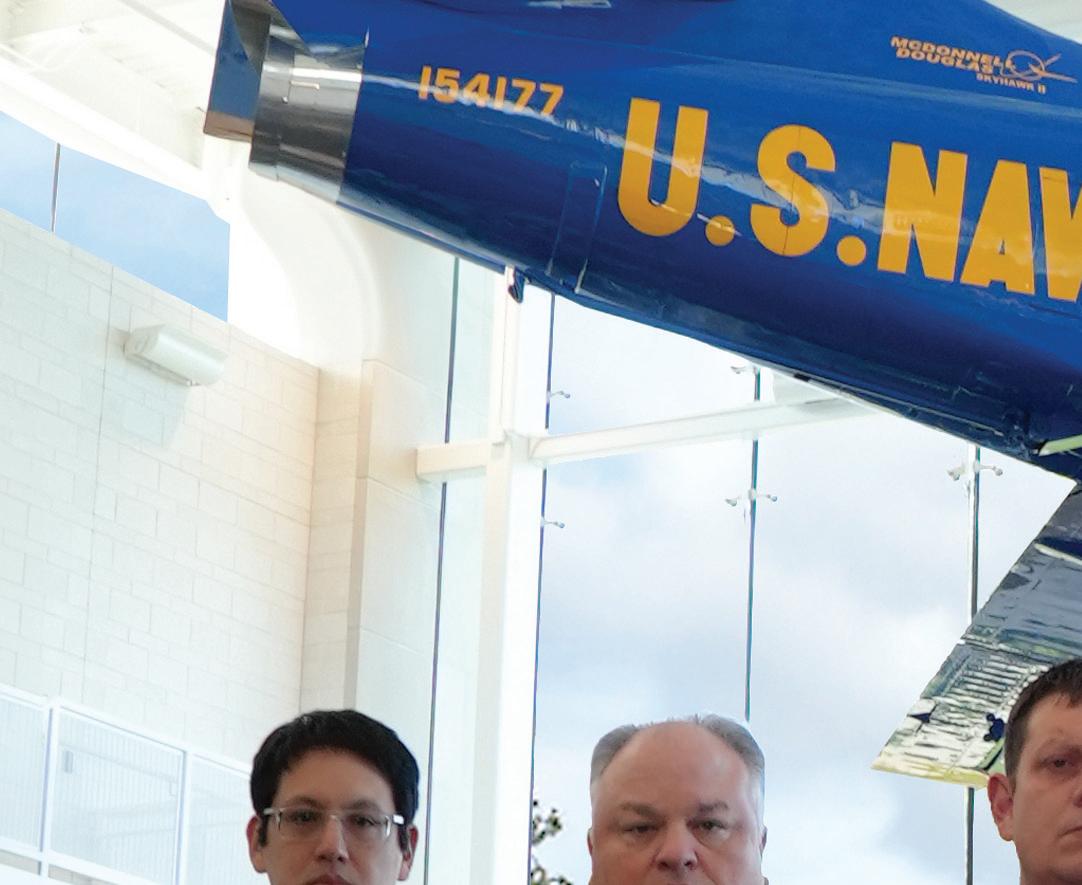




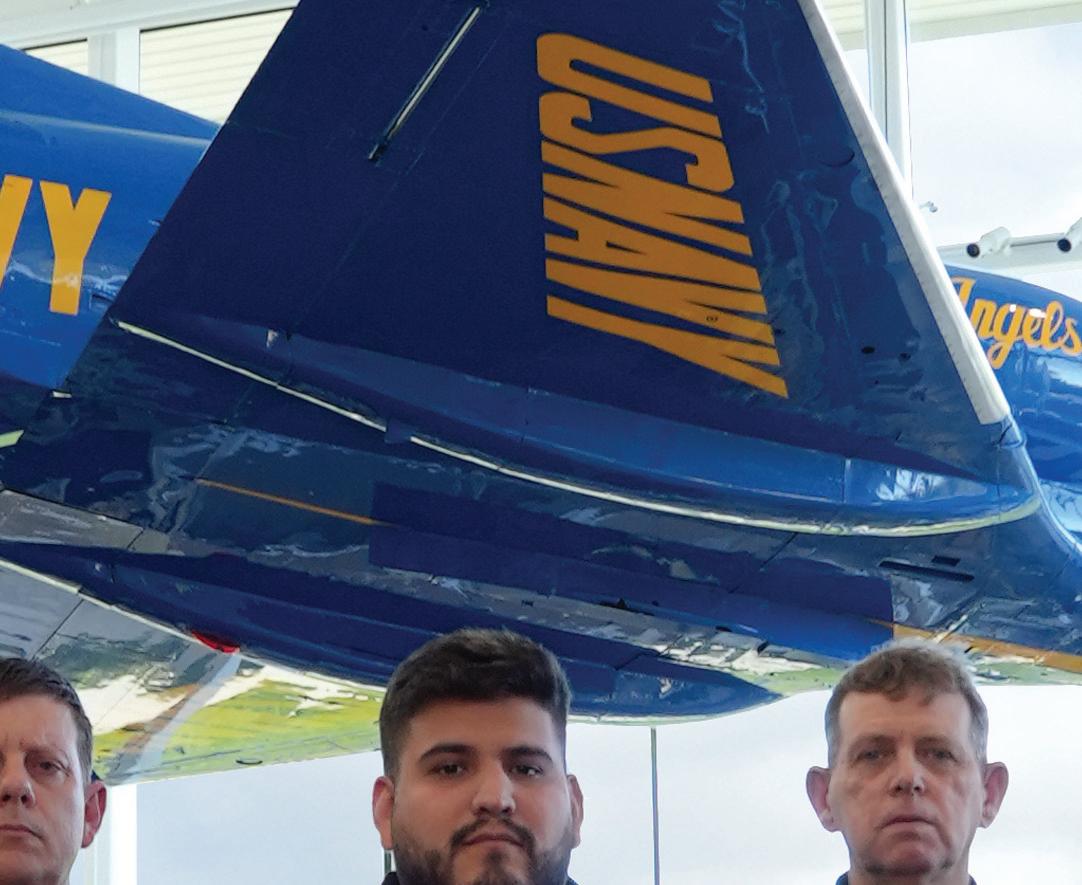









































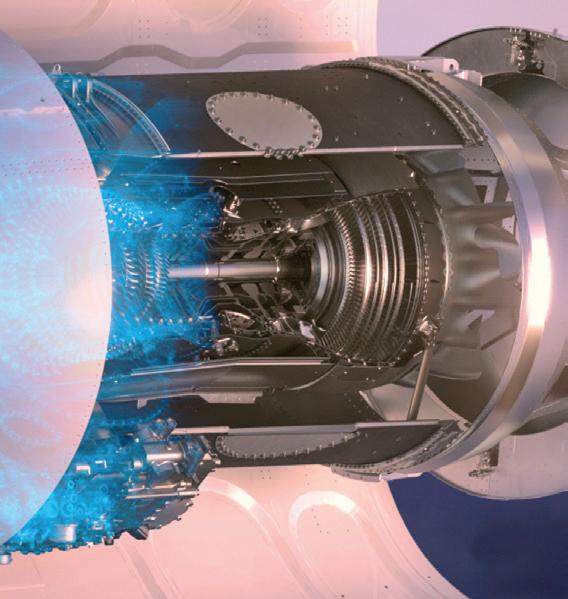


































































































It’s show time!
As we all head towards NBAA-BACE again, it is worth reflecting that since its founding in 1947, NBAA has worked tirelessly to promote the interests of the business aviation community. The platform it has provided for over 75 years has enabled us to come together and to connect with peers, clients, prospective customers and vendors right across the sector, thus giving us all ready access to a far wider knowledge base and to a rich source of expertise.
It is now becoming routine for business aviation to be targeted by climate change protestors, the vast majority of whom have no or little awareness of the steps the industry is taking to mitigate its impact on the planet. In the light of this, it is heartening to see the formation of the bipartisan Senate Sustainable Aviation Caucus, which was announced in late September. Founded by Senators Jerry Morgan (R-KS), Tammy Duckworth (D-IL), John Boozman (R-AR) and Amy Klobuchar (D-MN), the caucus will be chaired by Senators Moran and Duckworth.
As NBAA noted in its release on the formation of the new Senate caucus, the move will undoubtedly help to push the industry towards improving access to sustainable aviation fuel while promoting innovation in new technologies to reduce emissions. Congress established a similar caucus in June. The formation of the two caucuses underscores the value of governmentindustry partnerships and the shared commitment to sustainability.
Roger Baker will not be attending NBAA-BACE this year due to medical advice regarding another potential intervention, after suffering from a major heart attack and having a stent fitted back in August. We all wish Roger a speedy recovery and look forward to having him back on the team.
We are pleased to announced that we’ll be holding our NBAA-BACE Networking Event this year at the Hard Rock Cafe, Las Vegas, on the 23rd October. We’d like to give a big shout-out to our event sponsors, without whom the party would not be possible. As usual, it is by invitation only and our advertisers and sponsors have priority. For tickets please contact our CEO, Max Raja.


all enquiries, please contact Max Raja at max@bizavltd.com or on +44 (0)203 865 3736




Wayne
Anna
Tricia


66 World-class ground handling
Karim Berrandou, CEO and founder of G-OPS, on the 20th Anniversary of the founding of his international ground handling operation
76 Making it Real
Mark Kammer, Co-Founder and Operations Director at Dynamic Advanced Training, on the vision behind the region’s leading aviation Safety Training organisation
86 Turn at the Gerkin and brace up!
Chris Clayton, Commercial Manager at London City Airport Private Jet Centre, on London’s iconic airport
Michael Holy, CEO of pilot training specialists, Aviation Academy Austria, on building a
Derek DeCross, Chief Commercial Officer, on Signature Aviation on becoming a leader in
Alexis Javkin, Executive Vice President of Maintenance and Supplier Management at JSSI, on
92 Know the Risks
Eric Schouten, CEO and Founder of Dyami Security Intelligence, on providing operators and owners with potential life-saving knowledge
98 2-Star Michelin quality catering
First Chime founder and Executive, Chef Young Park, on forging a unique catering proposition for business aviation

PREMIUM AVIATION LEATHER FOR YOUR WORLD CLASS CLIENTS
Visit NBAA booth #3851 to see how our custom finishing techniques can achieve a result tailored to your unique vision.






First Scandinavian FBO to reach the Advanced Safety Standard


















Sundt Air Executive Handling AS , a part of the Sundt Group, has achieved the International Standard for Business Aircraft Handling (IS-BAH™) Stage 3 registration .
The first Scandinavian FBO to achieve IS-BAH Stage 3, Sundt Air Executive Handling is also the second FBO in Europe to achieve the advanced safety standard level.

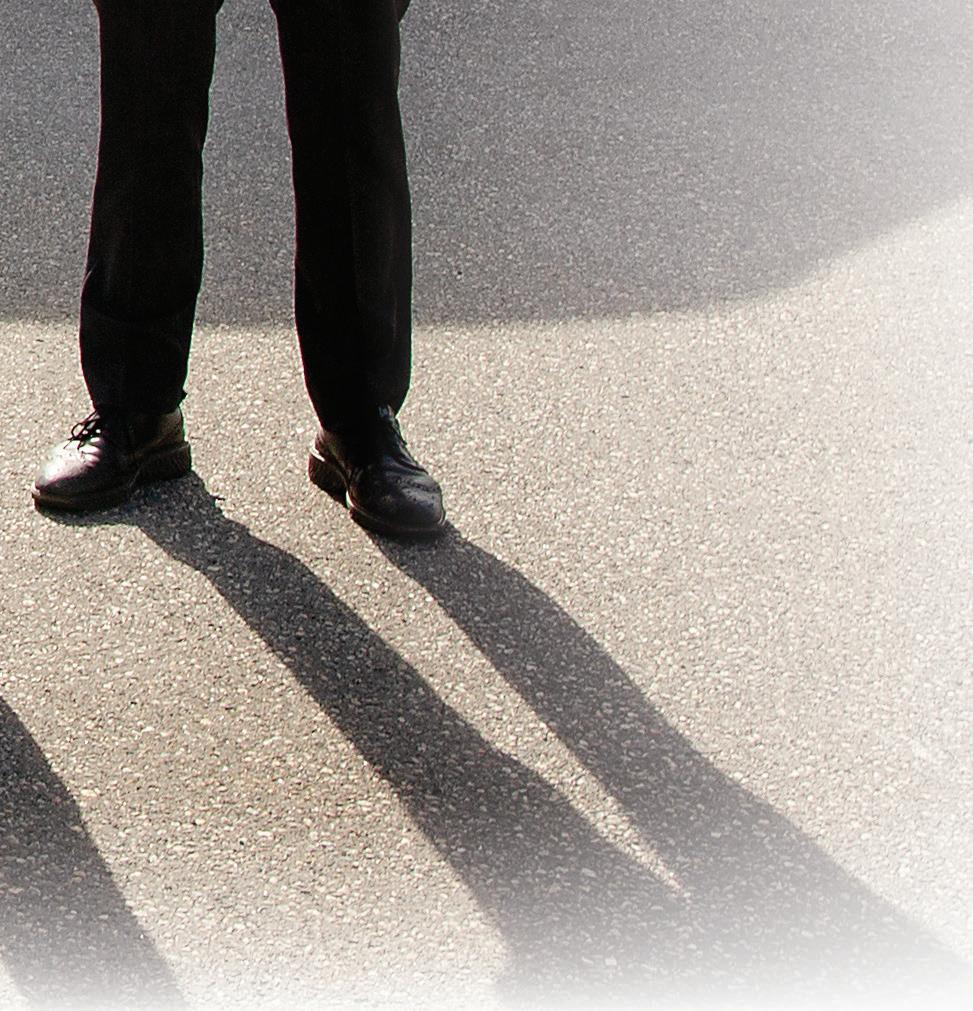





Frequency 134,175 Mhz, Oslo, Norway - ENGM Gardermoen Airport Tlf + 47 64 82 02 00 | handling@sundtair.com Frequency 134,175 Mhz, Stavanger, Norway - ENZV Sola Airport Tlf + 47 40 04 10 10 | svg.handling@sundtair.com
Sundt Air Executive Handling will supervise and support any fl ights you have within Scandinavia. Our NATA Professional Line Service and Management teams are the most experienced and can assist in making every fl ight seamless from arrival to departure.




Skylink Services Ltd is part of the Skylink Group of Companies. The company is well-established and provides ground handling services for General Aviation Aircraft in Cyprus. We began operations in 1992, filling the gap in the Executive Aircraft ground handling market, at both international airports of Cyprus, Larnaca and Pafos.

P.O.Box 43012, CY 6650 Larnaca - Cyprus
T: +(357) 24 84 09 00 • F: +(357) 24 66 58 05
E: flightops@skylink.com.cy



T: +(357) 24 64 33 34


F: +(357) 24 64 35 99







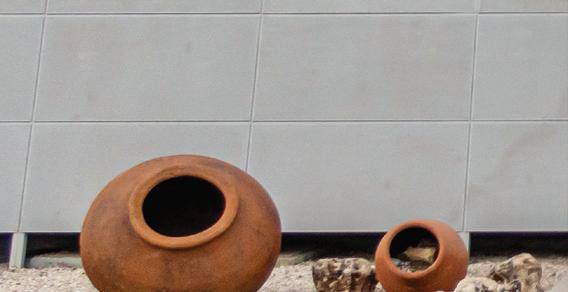





















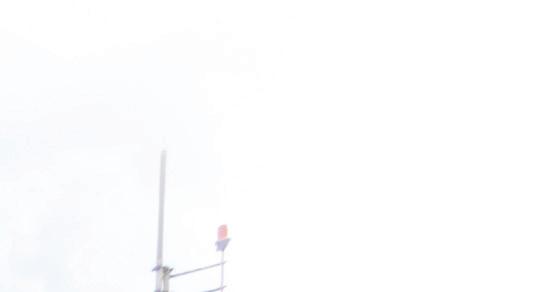






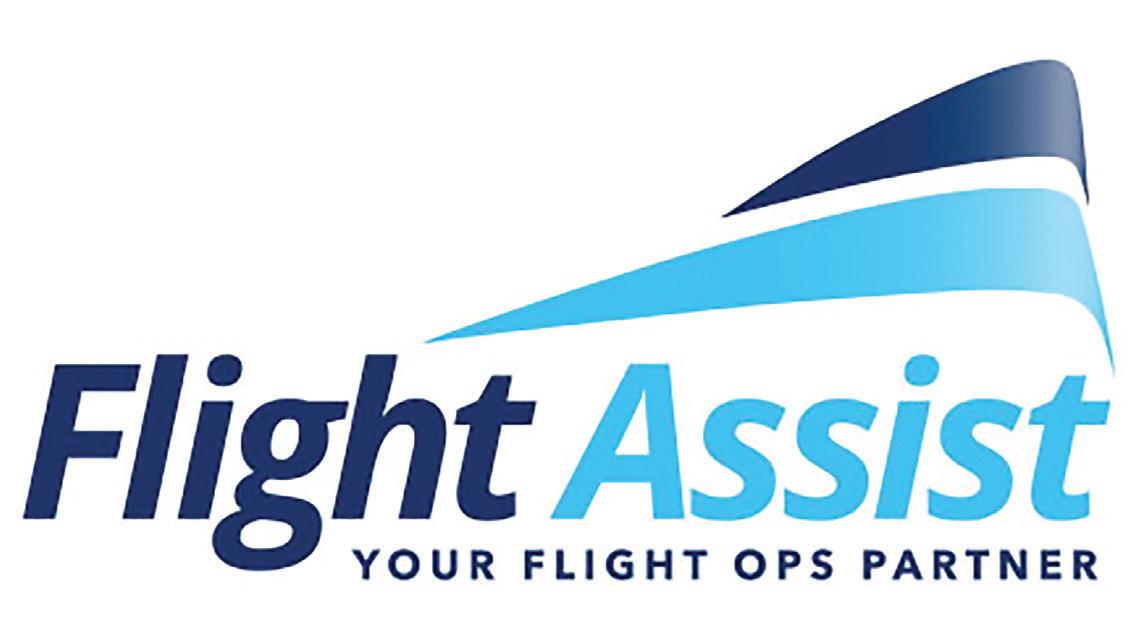


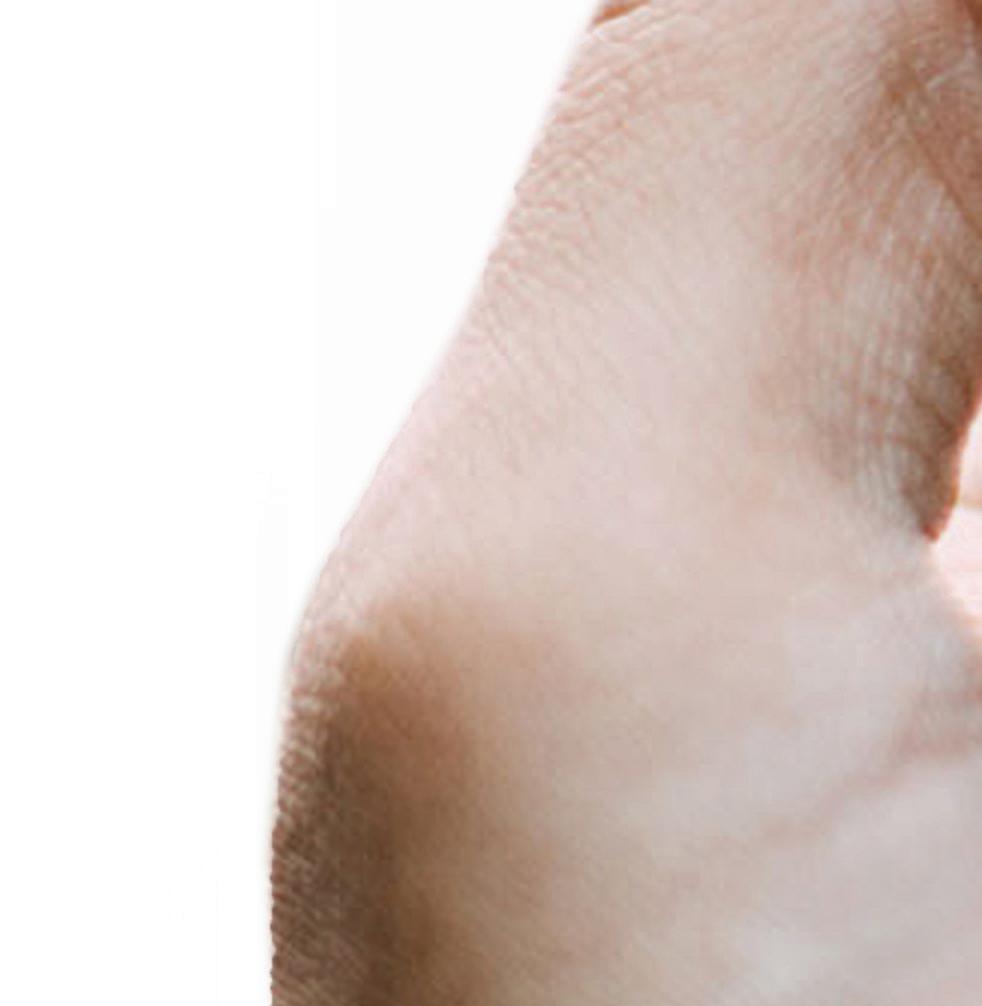
















Catholic Central QR Code



Troy Michaels, President and Managing Partner of Cabin Management Solutions (CMS), talks to Anthony Harrington about the company’s transformation of in-flight entertainment systems
Cabin Management Solutions, LLC (CMS) was born out of the frustration and pain associated with the current generation of cabin control and entertainment systems. These systems have long been known for their extensive lead times, multi-month installations, exorbitant NRE charges and software development that is painful at best. CMS was formed to change how customers view Cabin Management and In-Flight Entertainment (IFE).
CMS is made up of a group of forward-thinking, industryexperienced professionals who pride themselves on bringing to market a system marked by quality, efficiency and next generation technology that is not only ready for today but designed to grow with the changes of aircraft ownership over time.
AH: Troy, before we get into talking about what prompted the launch of CMS, let’s talk a bit about the striking photograph featured on the front of this issue of Business Aviation Magazine.
TM: Well, the replica Blue Angel aircraft featured is an actual A4 Skyhawk but with Blue Angel paint. There is actually a real, Blue Angel flight suit and helmet in the cockpit. The aircraft hangs at Catholic Central, an all-boys High School, just outside of Detroit Michigan.
The owner of CMS, George Turek, was a student at this High school, and over the last three years our owner has built a complete cutting edge STEM building for Catholic Central comparable to the cost of a Global 7500 or G700. The building is complete with a Redbird flight simulator, an observatory, a state-of-the-art machine shop, a robotics department, and a 98 foot by 15-foot

“ We are focused on bringing the latest cutting-edge CMS systems to today’s aircraft. Everything is engineered to the highest standards using the latest technologies and components.”



270-degree 8k immersive video room. These incredible facilities are available to students today and will be for decades to come. This new STEM building has some patented CMS technology running the Audio/Video throughout the 130-acre campus.
AH: Can you tell us a little about your background and how it has shaped CMS.
TM: Sure, by trade I am a master electrician with an RF engineering degree. I started my own Audio/video integration company in southern California 33 years ago, with offices in Nevada and California. This was a unique time. Ultra-high-end technology was being developed at a fever pitch for homes and commercial projects. My company was fortunate to be located in the fastest growing counties in Las Vegas and southern California for almost 20 years. This fortunate timing brought incredible opportunities and projects to my company’s doorstep.
Most of these were one-off custom projects, so when it comes to designing Audio/Video and lighting control systems, I have a great understanding of the challenges posed by designing such systems for todays next generation CMS systems.
Lastly, because of the complexity of these systems and the challenges involved in putting together the manpower to design and install them, I became very good at identifying and recruiting exceptional talent. I worked side by side with these individuals for decades, and today, this is exactly what I’m doing with CMS.
We are focused on bringing the latest cutting-edge CMS systems to today’s aircraft. Everything is engineered to the highest standards using the latest technologies and components.


“ CMS recently demonstrated our G550 in Savannah, to some select industry veterans. Their consensus was that the system is nothing short of incredible and a game changer.”

CMS recently demonstrated our G550 in Savannah, to some select industry veterans. Their consensus was that the system is nothing short of incredible and a game changer.
AH: Can you give me some details of this system?

TM: One of the much-anticipated demonstrations was our industry first, the Explore 4K60 moving map that was being displayed on all of our CMS monitors. The aircraft sports a beautiful 43-inch 4K OLED over the AFT Divan, along with a 27”, 24” and QTY 2- 22” LCD’s running at 4k60 on the bulkheads, a 15” galley touch/monitor and 19” HD touch screen monitor. We had seven monitors in total, all running at the highest resolution. Our aircraft is equipped with Star Link, which enables us to demonstrate the capabilities that sets our system apart from any system out there.
For example, during the demo, we had an Apple TV playing a 4K movie from Netflix, and 2 Roku Ultras playing 4K60 content. We also had an Xbox playing at 4K60, our Explore map playing at 4K60, an iPad plugged in playing via the USB-C port at 4K60, all while charging at the same time.

Passengers in all of four cabin zones in the aircraft can listen to or watch any of the sources independently, if desired. We have the newest generation of Bluetooth audio input and headphone listening capabilities in every zone. If you prefer a bigger sound stage, our 3000 watts of power over 3 amplifiers bring our subwoofers and speakers to life.
To top this off, all the switch panels and equipment were a mechanical drop-in installation. The monitors required one cat-6A cable along with power and ground.


AH: What are the biggest advantages when installing a CMS system compared to competitor offerings?
TM: With CMS’s modular mechanical design and wireless system control, installation time is reduced, with proper planning, to about 50 percent of what it takes with current system offerings on the market today. So, in short, it dramatically reduces aircraft down time and means that the owner or operator has the option of upgrading their old IFE systems when the aircraft is undergoing other shorter, scheduled maintenance events.

AH. Your new Elevate Amplifier is getting a lot of attention; what can you tell us about this new product?
TM: Our new, improved, 10-channel amplifier is the highest caliber amplifier ever offered to aviation. For example, the amp has a nine band EQ per channel! It has 90 watts per channel or bridge mode for a subwoofer of 200 watts. It delivers a very smooth bass and emotional bass passages, along with clean vocals with precise highs.

This requires power. So, you need to understand that Dolby, DTS, Thx all have minimum wattage ratings that are required to obtain excellent speaker performance. Our industry leading amplifier meets that and more.

AH: What has been the biggest surprise CMS discovered about aircraft IFE/CMS systems on the market today?
TM: From my experience in the High-End Audio/Video world, over the last 25 years, what has been truly baffling for me has been the stagnation in the cabin technology available in aircraft across the board.















“ CMS provides the only Audio/Video distribution system that gives 10GB/sec of data end-to-end, from the source to the monitor. That is what we mean when we say our system is bleeding edge and completely outclasses the competition.”
To make the point, high-definition television (HDTV) was introduced back in 1998 in the United States, almost 27 years ago. Composite video became standard in 1953. So it is amazing to find that there are still so many aircraft flying today with this ancient technology as part of their installed IFE systems.
Today even the top four aircraft manufacturers are still delivering aircraft with some of this older technology installed.
AH: What is the CMS take on 4K/8K screens in aviation today?
TM: Other vendors do not really go into their specifications or even show them, probably for obvious reasons. So, let’s dig into the details on what matters. Video distribution of 4K @ 30fps (4K30) amounts to 6GB/sec of data throughput.

So, unless you have the ability to move that much data you absolutely have to compress the video and audio.
This is why there are numerous stories of video issues and audio sync issues plaguing the industry today. CMS provides the only Audio/Video distribution system that gives 10GB/ sec of data end-to-end, from the source to the monitor. That is what we mean when we say our system is bleeding edge and completely outclasses the competition.
Our Empire system provides zero compression at 4K30 and requires just a fraction of compression at 4K60. By comparison, current Audio/Video distribution systems are at a minimum of 10 to 1 compression @ 4K30 and 20 to 1 @ 4K60. This is a huge difference and illustrates why we



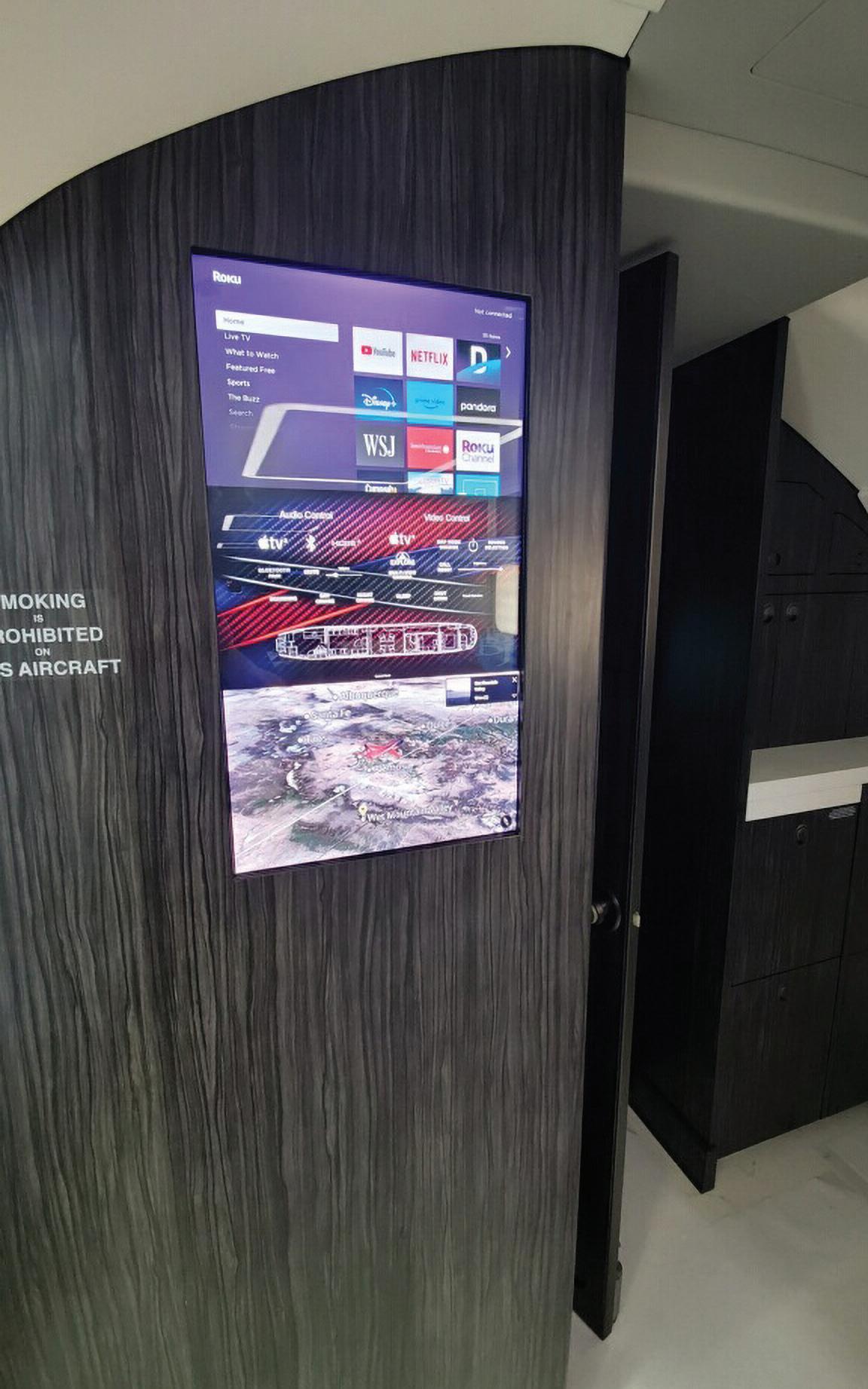
can deliver a vastly better experience. Our patented Empire system delivers ZERO compression video and audio today! Plus, it will be ready for 8k in the very near future with hardware change. The AV wiring backbone stays the same.
AH: CMS has delivered a lot of cabin upgrades in the last year. How are things going?
TM: Really well. Our systems are now flying on the following airframes: Dassault F2000, F2000EXy, F900EX, F900EXy, Gulfstream GIV, GIVSP, G550, Lear 60XR, Bombardier CL604, CL605, Global XRS, Citation 560, Citation VII, and Boeing 737-700 (BBJ). There are several other airframes in the works, such as the Lear 45, Challenger 300, Global 6000 and an Airbus A330-900.
“ “We will buy any domestic plane ticket in the United States for any Aircraft owner, Director of Maintenance or Chief Pilot considering upgrading or replacing their Cabin to a new state of the art CMS system.”
Because the Aircraft industry is a very unique industry, CMS has found that the aircraft owner or director of maintenance is not always being presented the best solutions for their aircraft, So here’s a CMS promise:
“We will buy any domestic plane ticket in the United States for any Aircraft owner, Director of Maintenance or Chief Pilot considering upgrading or replacing their Cabin to a new state of the art CMS system.”
They will see a convincing demonstration of our Empire installation on a G550 that must be experienced, to be believed. It will showcase the following:
• Control switches - pedigreed with 2 patents, and requiring no wiring, which equates to convenience and weight savings, along with faster installation times.
• Our patented Audio/Video system, instant switching, superior sound capabilities and a complete suite of 4K and HD monitors.
AH: So, to summarise, what makes CMS technology the most advanced and flexible IFE/CMS in aviation?
TM: This question has a very easy answer. CMS developed the most advanced IFE/CMS system available today by first looking at the current systems on the market, with an emphasis on system specifications, bandwidth limitations / amplifier wattage / current Bluetooth technology, and future proofing or expansion capabilities. We looked at how convenient they were to install, how much drop-in replacement capability there was, and what the cabling requirements were.
It was quite clear that the technology being offered, even today, was old and outdated. Not even brand-new aircraft in 2024 are delivered with a true 4k60 Audio/video distribution system, or with the next generation Bluetooth connectivity of 5.0 or higher.
So, we made sure that we offered the latest cutting-edge technology and made the system as convenient as possible to install. The proof of how well this is being received can be clearly seen by the number of new installations that we are now carrying out. We are well pleased with the results so far and very confident that the best is yet to come. |BAM




































Clay Healey, the owner of AIC Title Service, talks to Anthony Harrington about his new, generally available pricing service, AIC Lynx

AH: Clay, let me begin by asking you what the motivation was for you to take the time and trouble to make a lowcost, history of aircraft sales prices by OEM and aircraft type, generally available as a subscription service? At $25 a month, and a free 7-day ‘no-credit-card-needed’ trial period for potential subscribers, the service is clearly not aimed at making you pots of money.
CH: To be frank, there are two major motivations. First, the more transparent pricing information is available to the market, the easier it is for aircraft transactions to happen. At AIC Title Service we clearly have a vested interest in seeing as much selling and buying of aircraft as possible. Anything


“ It struck me as far back as 2006, that it would be tremendous to have a service available that I could just point people to. I envisaged a readily available, price history service that featured as many aircraft and helicopter types as possible, from piston engine aircraft, turboprops and on through light and medium jets.”
we can do to facilitate transactions happening works for us. That’s pretty clear.
The second and more personal motive is that for a couple of decades now, every time I get together with folks at a dinner or at a conference, or just about any event, I get inundated with people wanting pricing information. What do I think this jet, aged 5 years or whatever, is worth? Over and over, it’s always the same barrage of questions over pricing.
It struck me as far back as 2006, that it would be tremendous to have a service available that I could just point people to.









I envisaged a readily available, price history service that featured as many aircraft and helicopter types as possible, from piston engine aircraft, turboprops and on through light and medium jets.
Now, the technology we have put together at AIC Title Service, our closing room which holds all the documents for both sides of a transaction, plus our escrow service, all this has generated a treasure trove of information. For years now I have been able to go into that information and look at historical pricing across thousands of models.
Of course, I couldn’t make this information public as it stood. It contains all kinds of confidential information on buyers and sellers. So, I decided that we would clean up the data, take out all the confidential information and make each data point anonymous.
It took us years to comb through the data and get it to the point where it provides an encyclopaedic view of how sales have gone for a vast number of aircraft and helicopters, but at the same time protects the confidentiality of the buyers and sellers on every transaction.
AH: I’ve registered on your AIC Lynx service myself by signing up for your free 7-day trial and played around with model, year and pricing information. I can attest to the fact that it is dead easy to use and really informative. Plus, of course, there is no ‘hook’ or trap. If you don’t sign up at the end of the 7 days, you’re out of the system and the trial hasn’t cost you a penny. Can you take the readers through what they are getting when they subscribe?
CH: Sure. The first point to make is that there is no long or short-term contractual lock-in when you sign up. You pay your one month’s fee, and then the next and so on. And you stop
“ Now, the technology we have put together at AIC Title Service, our closing room which holds all the documents for both sides of a transaction, plus our esc row service, all this has generated a treasure trove of information.”
whenever you like. If you don’t have a continuing use for the system, I’m not going to try to trap you in it. You’re free to go.
Now, if an aircraft has sold within the last 45 days, you will just see the last price that the particular aircraft type you are looking at, sold for. We protect the details of the transaction by not showing the actual date of the sale, just the month. Also, if it is sold then immediately resold within the month, you only see the last price it sold for.
As I said, the database has every kind of aircraft and helicopter listed. We have some 30,000 types in all, perhaps even closer to 40,000. It has everything the industry trades. So, you can say, as a broker, look, I have a Cirrus SR 22, what is the average selling price and how has that changed in recent


years? There are 3000 transactions in the database involving this aircraft type. For a T22, there are 800 transactions. In 2018, for T22s there were 61 transactions and the average selling price that year was $869,000.








That is the kind of information that is instantly available. So, if you have one of those aircraft to sell, and it is a specific age, you can get an immediate idea of what price you should be looking for. Now, to be clear, the database does not say what the extras were on each of the aircraft. It doesn’t list the avionics it has, or how many flight hours the aircraft has logged. It is a basic pricing database by year, month and model type. It is a great tool for people to get an approximate price for the value of the aircraft that interests them. That’s it.
AH: Obviously, brokers will be interested. Who else do you see as potential subscribers?
CH: It should be a great tool for banks and finance houses. They can go into the system and see what the aircraft generally costs. So if their client is coming to them with a figure that varies widely from the average figure the banker is looking at, they can start asking sensible questions and diving into the details.

As I say, I’ve had this capability myself for the last 8 to 10 years and a number of my friends have constantly pointed out to me that this tool would be beneficial to so many people.



“ It should be a great tool for banks and finance houses. They can go into the system and see what the aircraft generally costs.”
I had to clean all the specific details out of the database to protect brokers and their clients, but the anonymous data is obviously useful.
There are no European transactions in there. It is all American transactions, but there is not enough outside the US to swing the prices very much. I started to make AIC Lynx available in early September and we are just now getting folks who have gone past the 7-day exploratory period and are now signing up.





We have an Association that is looking at it and wants to provide it as a tool for their members. We’ll probably give it to the members for a slight discount. This is all about helping to promote more aircraft transactions and I’m confident it will do so. |BAM

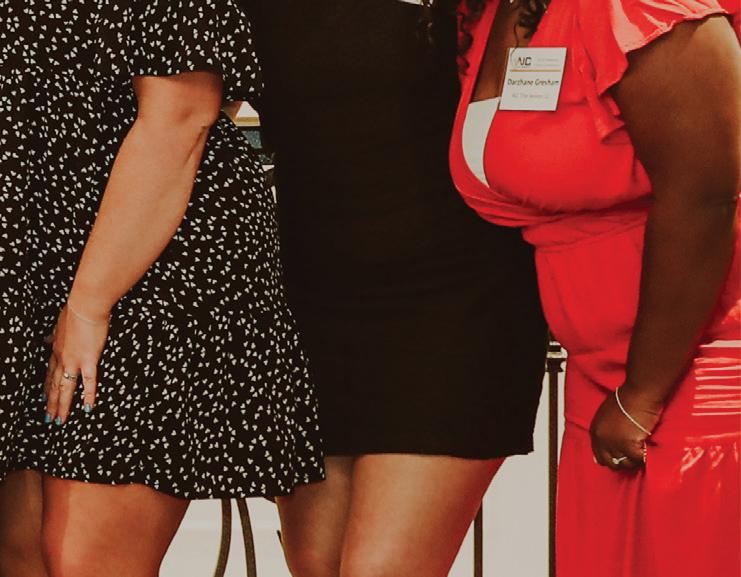





Wayne StarlingErika Ingle

Wayne Starling, Executive Director of IADA, and Erika Ingle, Managing Director, sit down with Anthony Harrington to discuss the association’s achievements and future ambitions
Established in 1991, the International Aircraft Dealers Association (IADA) has grown to become a significant force in the aviation industry. Originally formed to promote ethical standards among aircraft dealers and brokers, IADA has steadily evolved into a leading advocate for transparency, professionalism, and expertise in the business aviation marketplace.
Over the years, IADA has expanded its reach and influence, becoming a trusted organization within the preowned aircraft market. The association’s rigorous standards and code of ethics have helped shape the way transactions are conducted,
with IADA-Accredited Dealers and Certified Brokers playing a critical role in ensuring clients are provided with sound advice and trustworthy service. Today, IADA members are involved in half of the world’s preowned aircraft sales, underscoring their expertise and the critical role they play in the global marketplace.
Through the world’s only rigorous accreditation and verification processes, IADA ensures that its members meet strict criteria for professionalism and trustworthiness.
Wayne Starling, Executive Director of IADA, and Erika Ingle, Managing Director, sit down with Anthony Harrington to discuss why business aircraft buyers and sellers should reach out to IADA’s members to help them with their transactions.
“ Today, IADA is synonymous with excellence in the preowned aircraft market. Our high standards and strict code of ethics have helped shape how aircraft transactions are conducted.”

AH: Wayne and Erika, IADA has gone through a few changes over the years. Could you start by walking us through the organization’s history and evolution?
Wayne: Of course! IADA, or the International Aircraft Dealers Association, has quite a legacy in the aviation sector. It actually began in 1991 as the National Aircraft Resale Association, or NARA. Back then, our mission was to create a set of ethical standards for aircraft dealers and brokers—a way to promote transparency, professionalism, and expertise in the business aviation world. And honestly, that remains a big part of what we do today.
Erika: Yes, and fast forward to 2018 when we made the shift from NARA to IADA. This rebranding allowed us to expand beyond the U.S. and become a global organization. It was a significant step for us because it broadened our reach and influence internationally. Today, IADA is synonymous with excellence in the preowned aircraft market. Our high standards and strict code of ethics have helped shape how aircraft transactions are conducted. IADA-Accredited Dealers and Certified Brokers offer both buyers and sellers a level of trust and expertise that really stands out. To put
“ IADA’s strength comes from our members. Their talent and expertise drive buyers and sellers of business aircraft to seek their counsel. IADA’s structure supports our members in every way possible.”
things into perspective, our members are involved in around half of all preowned aircraft transactions worldwide. That alone speaks to their influence and credibility in the industry.
AH: That’s quite an impact! So, what exactly makes IADA so powerful in the marketplace?
Wayne: IADA’s strength comes from our members. Their talent and expertise drive buyers and sellers of business aircraft to seek their counsel. IADA’s structure supports our members in every way possible. The different groups that make up our membership play a role in advancing our mission of promoting integrity and transparency. Our Accredited Dealers are the core of our membership and represent the top preowned aircraft dealers in the world. They’ve earned a well-deserved reputation for excellence and they undergo a stringent IADA accreditation process. We evaluate each dealer based on their track record, reputation, and financial stability. Only those who meet our high standards get accredited, and that’s what sets them apart in the industry. When buyers or sellers work with an IADAAccredited Dealer, they can be confident they’re working with the best.






“ IADA U is our educational initiative designed to foster professional development for the next generation of industry leaders. We offer a variety of courses and workshops that cover important topics like ethics, market trends, and transaction management.”
- Erika Ingle

Erika: That’s right. And beyond the dealers, we have our Certified Brokers. These brokers work for the Accredited Dealers, and they specialize in aircraft transactions. They go through a rigorous certification process, which ensures they have comprehensive market knowledge and adhere to the highest ethical standards. It’s an extra layer of assurance for clients because they know they’re working with someone who follows strict professional guidelines.
Wayne: We also have Verified Products and Services Members. These are companies that provide essential services related to aircraft ownership and operations, like financing, insurance, legal support, and maintenance. We vet these members thoroughly to make sure they meet the same high standards our organization is known for. This means our dealers and brokers have a trusted network of partners throughout the entire aircraft transaction process.
And then there are our OEM members—Original Equipment Manufacturers. They’re some of the biggest players in the aviation world and bring invaluable insights to the table. Their involvement helps ensure that IADA stays connected to the latest advancements in aircraft technology and keeps us aware of any emerging trends or issues in the industry.
AH: I’ve heard a lot about IADA U. Can you explain what that’s all about and how it ties into your broader goals?
Erika: Absolutely. IADA U is our educational initiative designed to foster professional development for the next generation of industry leaders. We offer a variety of courses and workshops that cover important topics like ethics, market
trends, and transaction management. The idea is to create a community of highly skilled professionals who are prepared to uphold the high standards that IADA is known for.
Wayne: We’re also really proud of our NextGen initiative. This program is focused on attracting young professionals to the aircraft resale industry. It’s a way for us to make sure the future of the industry is bright and filled with talented individuals who are ready to step into leadership roles. It’s all part of a broader effort to ensure that the values and standards we’ve set continue to be carried forward by the next generation.
AH: That’s great. Now, can we talk a bit about AircraftExchange.com and its role within IADA?
Erika: AircraftExchange.com is a key part of what we do. It’s an exclusive online marketplace where only IADAAccredited Dealers can list aircraft for sale. What makes it so unique is that every aircraft on the site is represented by the most reputable dealers in the industry. The platform provides buyers with a trusted space where they can find preowned aircraft, knowing that everything listed has been thoroughly reviewed and authenticated. It’s also helped to eliminate some of the unfortunate issues in the market, like phantom listings or bait-and-switch practices. Buyers can trust that they’re seeing real aircraft from real dealers.
AH: I also understand IADA has a philanthropic arm, the IADA Foundation. Can you tell us about its mission and impact?
Wayne: The IADA Foundation is something we’re incredibly proud of. It’s our way of giving back to the aviation








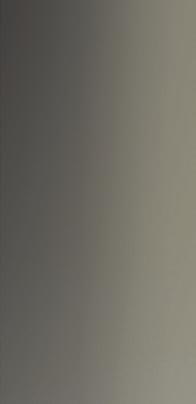


























community. We provide scholarships to students who are pursuing careers in aviation, which is one way we’re helping to nurture the next generation of professionals. But beyond that, we also make donations to organizations that are focused on promoting aviation education and innovation. It’s really about supporting the future of the industry in any way we can, and also helping those who need it most.
AH: That’s wonderful. Now, sustainability is such a pressing issue across many industries, including aviation. How is IADA addressing it?
Wayne: Sustainability is definitely one of our key


focuses as we look toward the future. We’re aware of the environmental impact of aviation, and we’re committed to supporting efforts that promote more sustainable practices in business aviation. One of our biggest moves in this area is our partnership with 4AIR. Through this collaboration, we’re offering IADA members and their clients practical solutions to reduce their carbon footprint. It’s a great way to align our goals with the growing demand for sustainability in aviation.
AH: Thank you both so much for taking the time to share all of this. It’s clear that IADA is doing a lot to shape the future of the aviation industry. |BAM


“ We’re committed to supporting efforts that promote more sustainable practices in business aviation. One of our biggest moves in this area is our partnership with 4AIR.”
- Wayne Starling











Anna Bergman, CEO of EAC Group, on the challenges of running a specialist charter, aircraft management and brokerage consultancy



Anna Bergman and Gunnar Samuelsson founded the EAC Group (European Aviation Consulting Group) with the aim of streamlining existing and future challenges in business aviation.
With more than 50 years of combined experience, Anna and Gunnar understand the growing need for extensive specialised competence in this industry. They provide expertise in aircraft sales, acquisitions, management and charter. The EAC Group’s knowledgeable specialists are committed to securing the investments of its clients in the aviation industry.


Q: Anna, what was it like to launch a wide-ranging specialist consultancy service for business aviation?



AB: Launching EAC Group was exciting and challenging. With about 40 years of combined experience in the industry—myself since 2010 and Gunnar even longer—we knew the ins and outs of business aviation but at the same time we had never started a company before. I brought extensive experience in charter sales and aircraft management, while Gunnar’s expertise spanned all aspects of managing aircraft transactions.
In 2017, we decided to join forces and start EAC Group in Stockholm, Sweden. We aimed to cover all aspects of business aviation, including aircraft management, parts, financing, transaction services, charter sales, aircraft law, and taxation.






“ I brought extensive experience in charter sales and aircraft management, while Gunnar’s expertise spanned all aspects of managing aircraft transactions.”


Q: How hard was it to get the business off the ground?
AB: It had its challenges, but we were fortunate to have a strong network of industry contacts to lean on. We began with the Scandinavian market, which we were familiar with, and gradually expanded to serve clients worldwide Establishing a charter affiliate in the U.S. a few years ago was a logical step, as it aligns with the preferences of U.S. clients.
Overall, the process has been manageable, and we’ve adapted to travelling wherever our clients need us, from New York to Florida, Boston, Seattle, and Georgia.
Q: You specialise in charter sales and aircraft management, I believe?
AB: Yes, that’s right. Many of our charter customers came
The company vision is to provide every customer with a unique service that is professionally and discreetly executed to each individual’s needs



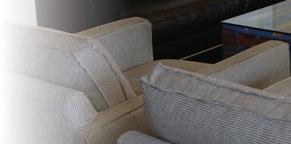

























PHONE: +41 76 558 44 23

EMAIL: roger.buechner@cat-airservice.com www. cat-airservice .com
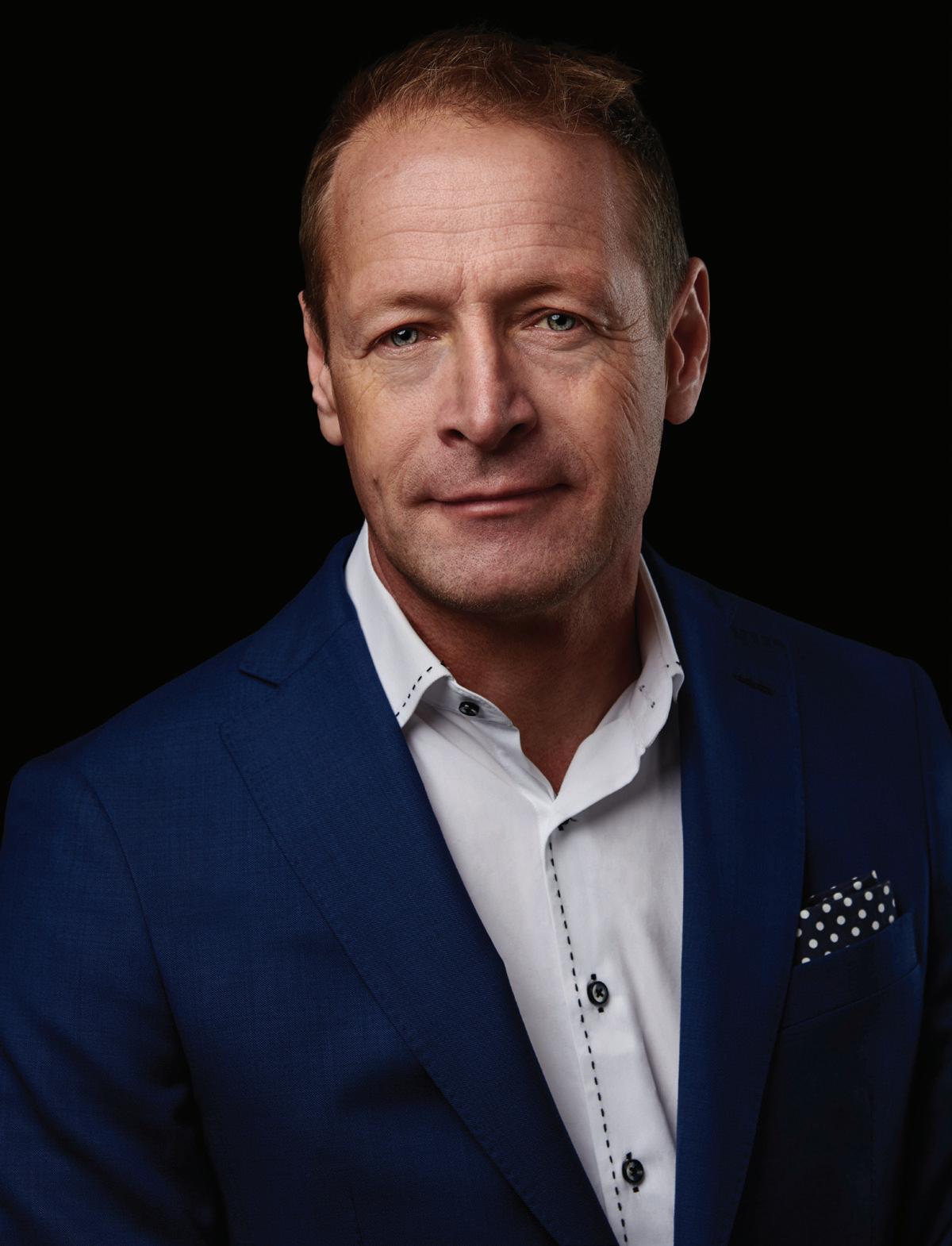
with us from our previous companies. They’ve been very loyal, so we didn’t need to do much marketing to get started. Most of our new clients come through word of mouth, thanks to the reputation we’ve built with our existing customer base.
Q: On the transaction side, do you cover the whole spectrum, from turboprops to heavy jets, and how many transactions a year do you aim for?
AB: Yes, we handle a wide range of aircraft. The smallest we’ve sold was a turboprop, and we work with everything from King Airs to Falcon 8Xs. The number of transactions varies from year to year, but with the strong market, we have been seeing double-digit amounts of transactions yearly. Our primary focus has been the Scandinavian market, but over the years, we’ve seen a growing number of international clients.
Q: Selling or buying aircraft is fraught with potential difficulties. How do you deal with that?
AB: Gunnar brings extensive experience with over 300 aircraft transactions, both buying and selling. We manage the entire transaction process for our clients and support them throughout the entire ownership period, advising about maintenance concerns, engine overhauls, and any questions
“ Gunnar brings extensive experience with over 300 aircraft transactions, both buying and selling. We manage the entire transaction process for our clients and support them throughout the entire ownership period, advising about maintenance concerns, engine overhauls, and any questions that arise.”

that arise. We believe it’s crucial to educate buyers about the complexities of aircraft ownership and the benefits of using a management company to operate their aircraft.
Additionally, when someone buys a jet, we help offset costs through charter sales. However, it’s important not to overdo charter hours, as excessive flying can lead to higher maintenance and operating costs, as well as faster depreciation. We work with our clients to find the right balance to keep their investment cost-effective.
Q: What of aircraft management?
AB: We do a lot of consulting on aircraft management. When someone acquires an aircraft, they then need to find the best-suited operator to operate their aircraft. So, we can compare the costs and levels of service offered by a selection of operators in their region, and help them choose the appropriate operator for their needs.
I have worked for operators and know that for any jet, although the operating costs will be roughly similar, type for type, there are many different ways of putting those costs down on paper. For example, the management costs cited by a large operator may be significantly more than that of a smaller operator.




Liverpool
jetcentre@xlrliverpool.com 0151 317 9325
Exeter
jetcentre@xlrexeter.com 01392 354 995
Birmingham
jetcentre@xlrbirmingham.com
0121 663 1450
Bournemouth •
jetcentre@xlrbournemouth.com 01202 364 401

“ On the positive side, there’s a new, younger generation getting into private flying. Many of them made their wealth in rapidly expanding industries and are highly focused on how private aviation maximizes their time and efficiency.”


However, the big operators will be buying more fuel, so therefore have better fuel discounts, and they’ll have better prices for crew training and for fees around the world. So, the headline cost can be a very deceptive measure. We help the client to understand what is involved. Our expertise can really make a difference here.
Q: Your consultancy spanned the Covid period. How was that for you?
AB: Covid was undoubtedly a challenging period for our consultancy business, particularly on the charter side. But it was tremendous on the transaction side. 2022 and 2023 were the best ever years for aircraft brokers and we did very well then. Plus, it is very well documented how charter sales jumped after Covid. People were eager to minimize risk exposure, so the demand for charter was massive.
Now, with interest rates still relatively high, people are more cautious with their spending. While the market experienced a dip after the pandemic years, it has since returned to the growth trajectory that was forecasted pre-Covid. Transactions have also slowed but remain on a steady path.
On the positive side, there’s a new, younger generation getting into private flying. Many of them made their wealth in rapidly expanding industries and are highly focused on how private aviation maximizes their time and efficiency. While they may need more guidance compared to older, more conservative or traditional clients, it’s an exciting shift that bodes well for the future of business aviation. |BAM

















Support throughout the aircraft ownership lifecycle: from pre-acquisition guidance and financing solutions; to maintenance programs and tracking software; to parts and engine leasing. Learn More







“ It is our mission to listen to the wants of the Designers and, as the expert in leather, offer recommendations for what is best for the end application.”
Sherry Cocker





It’s a relationship






Tricia Martin, Senior VP of Customer Service at Townsend Leather, and Sherry Cocker, Customer
Support Lead, on building lasting client relationships
Q: I understand that you have both been at Townsend for decades, for 30 years in Sherry’s case and for 25 years in your case, Trish. Can you share some of that experience with us?
SC: When I first joined the company, I began in the accounting department, where I gained a thorough understanding of the business. I was there for ten years then moved across to customer sales, which has been very rewarding.
TM: Sherry was actually one of my first mentors. At that stage, she’d had five years’ experience in the industry and was hugely capable. I spent time in several departments but learned so much from her.





We are both all about working with the designers and buyers in the various refurbishment and completion houses as they go about planning a refurbishment or outfitting a green jet. We get really close with the buyers, and we work with them day in and day out.

SC: It is our mission to listen to the wants of the Designers and, as the expert in leather, offer recommendations for what is best for the end application. For example, we discourage them from showing products that are not cleanable for use in high-wear areas of an aircraft or using a leather that will

You’re free to focus on what comes next. You’re on your mission and you know: You’re on top of compliance, safety, ops… All of this has become super easy and intuitive.


NGFT Systems will help you focus on what you love: Flying. We provide a unified platform consisting of modular IT-systems: Operations, Crew, Documents, Audit, Safety, TechLog, Flight Risk Assessment
Whatever you need. Talk to us. Booth 1361n at NBAA 2024.
contact@ngft.com
www.ngft.com






easily scratch for seating. We have worked closely with the folks in the upholstery shops over the years and we like to be proactive from the start of the project on what is practical with a natural product.
Q: Just a quick query, with leather you are working with a natural product. Do you get people expecting unrealistically that every hide is going to be identical to every other?
TM: Some customers really love the fact that it is a natural product. Others, we have to do a little educating. One of the most critical aspects of what we do is to anticipate the customer’s needs. We need to get to know how their assembly lines work, what they need and like, and ensure that we are there for them when questions arise.
SC: I work a lot with the OEMs and, of course, they plan their schedules well in advance, so we can always slot our deliveries in to meet their requirements. At the other end of the spectrum, we deal with the repair shops and they often generate rush orders. Fortunately, we have an extensive stock program and can almost always accommodate them in a timely manner.
We pride ourselves on building a long-term relationship with our clients. I’ve worked with some customers for over 20 years. Understanding their business is as equally important

“ Some customers really love the fact that it is a natural product. Others, we have to do a little educating.”
Tricia Martin
to us. We know quality and time is of great importance to them. I take great satisfaction in resolving product inquiries within hours. For more complex requests, we ensure clients are informed every step of the way, keeping them updated on the progress and delivery status.
As Trish said, we do a lot of educating with our customer base and we go out of our way to provide them with materials that they can use effectively and that will look aesthetically pleasing to their end customers.
TM: We offer onsite visits to our US manufacturing plant for our customers to learn how to handle and work with our products. We guide them through the intricacies of using natural materials like our hides, providing valuable insights into the entire process. Our goal is to ensure they fully understand and appreciate the product.
SC: We like to help our customers help themselves by anticipating their needs and sometimes answering their questions before they ask them. We provide product description sheets and a library of resources about the characteristics of leather. We have guidelines we provide which explain how incoming shipments from us should be handled. This includes letting the leather breathe naturally on a table or a rack as soon as you get it out of the box it is shipped in.






















Q: What is the scale of your larger orders?
SC: Where a completions house is ordering from us with a view to outfitting an entire green aircraft, they could easily be ordering 600 square meters of leather from us. At the same time, we do customized orders that are as small as one hide.
Q: You also have customers outside the aviation sector, right?
TM: We work with the hospitality industry, which includes hotels and casinos all over the world. We also work with residential interior designers and we’ve provided specialist leathers for some luxury car interiors and for super yachts. Most recently, we’ve expanded our offerings to include footwear leather.
Q: When you receive the hides, are they already fully prepared?
TM: Yes, they come in with a neutral colour but are already properly prepared. We then colour and finish the hides according to customer specifications. We can provide any custom finish, colour, or pattern that a designer or a client wants within 4-6 weeks.
We have thousands of embossing plates and rolls, plus our in-house graphics team can custom-produce designs and patterns. So, if a client has seen an interesting pattern that they want to have replicated, we can recreate that on a bespoke embossing plate. is brings their vision to life on the leather.


Q: How much hand-holding do designers require when it comes to them working with their customers?
TM: We offer overnighted library sampling or customized hand samples within 2-3 weeks, complete with detailed descriptions, performance data, testing results, sizes, and







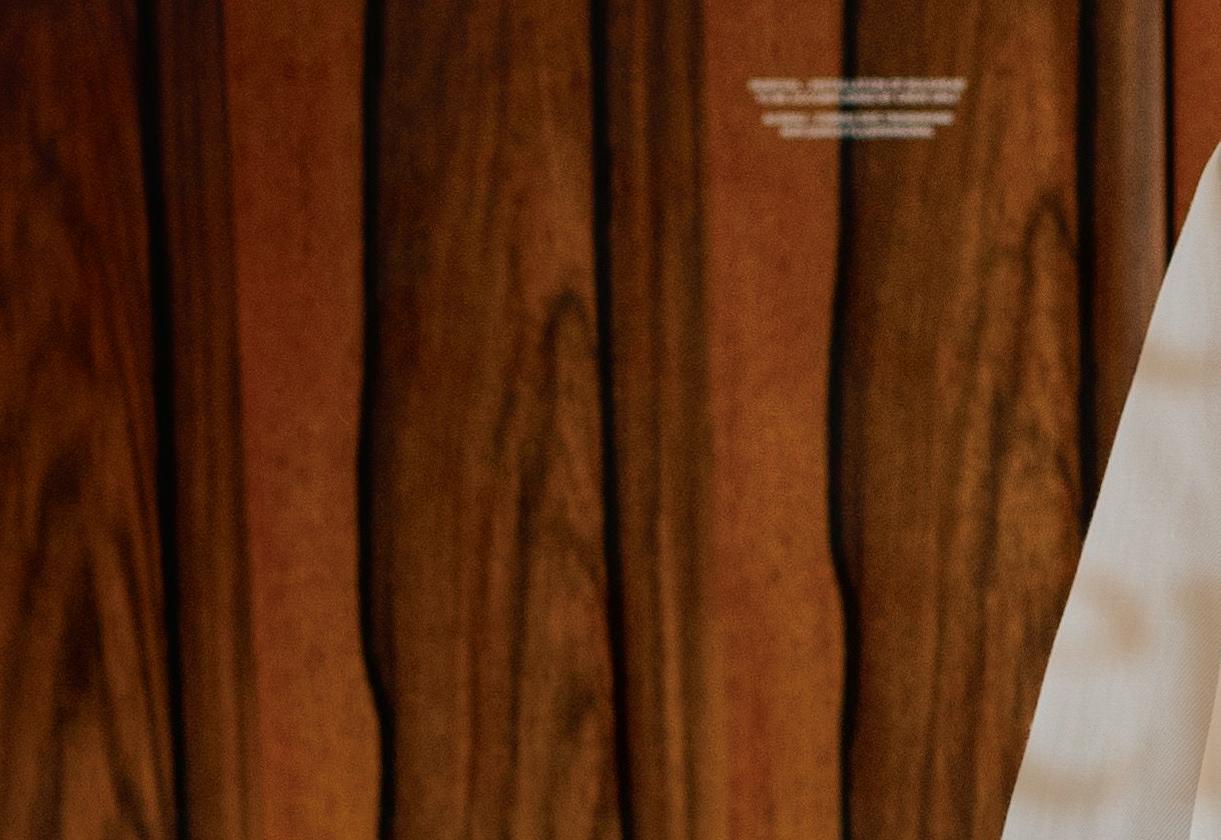


At F/LIST, we create interiors inspired by the beauty of nature. Crafted with experienced hands, infused with technologies of tomorrow, and perfected to last. Since 1950.













characteristics. This ensures designers have everything they need for efficient and impactful presentations.
Our aim is always to ensure that whatever the query we will get an answer to the customer within 24 hours, and we stick to that.
Q: I imagine word of mouth has really helped the company to grow, but are the shows also important to you?
TM: Absolutely! This coming NBAA will be their 30th anniversary. We have been to all thirty NBAAs. Sherry has been to the majority of them personally! It’s so great to have face-to-face interactions with our customers.
I want to give a heartfelt shout-out to my dedicated customer service team of ten hardworking individuals. As a company, we’re fortunate to have earned their loyalty over the years. They are among the most caring, hardworking, and teamoriented partners I could ask for. Sherry and I share a deep passion for this business. As both wives and mothers, we’re dedicated to making a positive difference in people’s lives while continuing to propel the business forward. |BAM












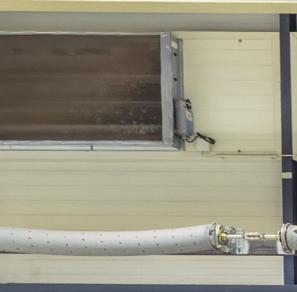
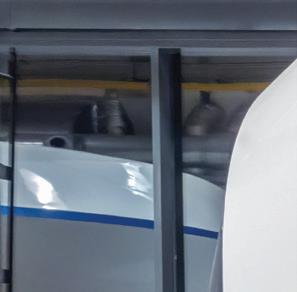
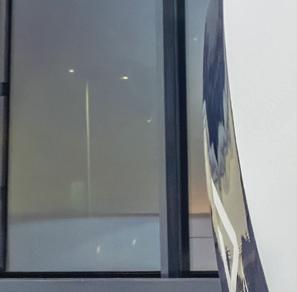





























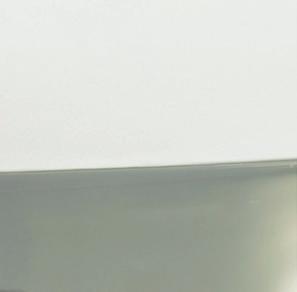






























Michael Holy, CEO of pilot training specialists, Aviation Academy Austria, on building a successful flight simulator business

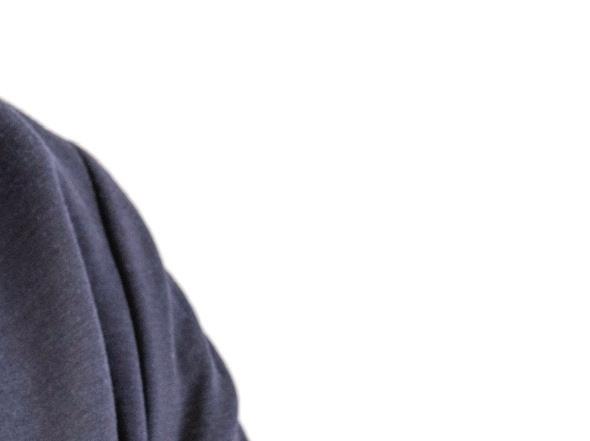



Aviation Academy Austria (AAA) is a provider of professional pilot training for air operators and private individuals. The business is focused on vocational training only, from the first flight of a student pilot in a single-engine aircraft to type ratings for airline and business pilots on modern full-flight simulators.
The company was founded in 2004 by a group of young pilots and started with the purchase of the first Level D full flight simulator. The participation of a regional investor, Athena Burgenland, put the company on a financially stable basis. In the following years, further simulators were purchased and the building was extended to six simulator spaces. The training
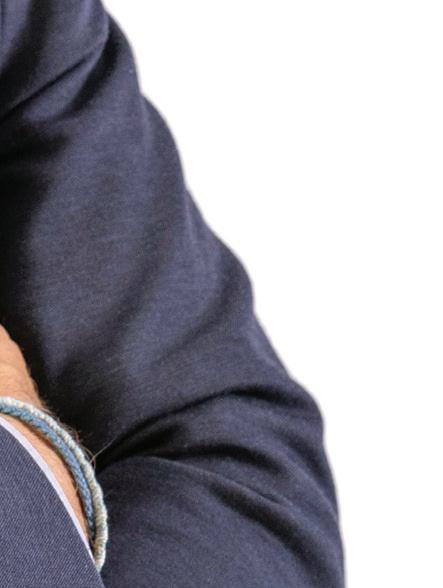


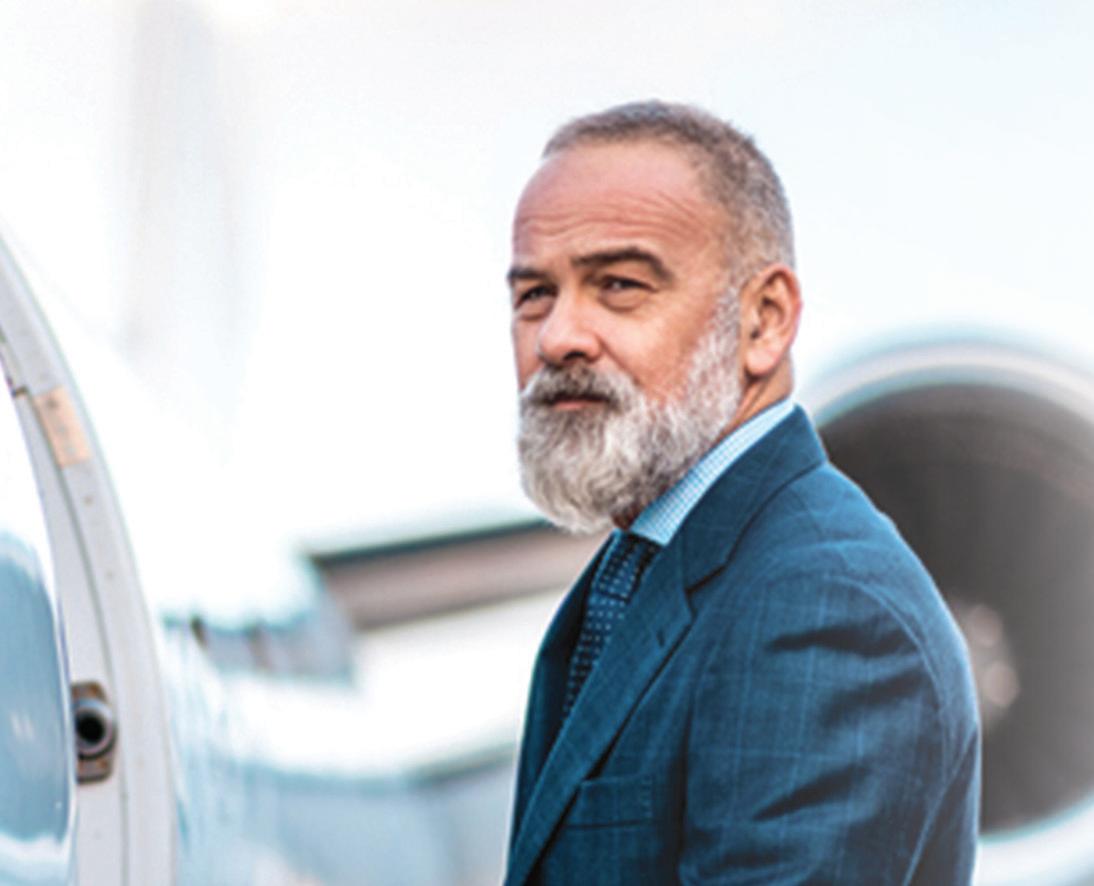





“ Our key differentiator is that we focus on individual training solutions, both for pilots, all of whom have their own goals, experience and proficiency levels, and beneficial solutions for operators.”
centre is located in Neusiedl am See and operates 24 hours a day, 362 days a year.
Q: Michael, you’re on your 20th anniversary. How did the business get started?
MH: Obviously, simulators are very expensive pieces of kit. The issue, when you start a simulator business is always going to be: where is the financing to come from and who assumes liability? Where do I get the simulator? Fortunately, for us, there was another Austrian company that wanted to get into the simulator manufacturing business. That company is called Axis Simulation. Together, they decided to take on the challenge but as funds didn’t cover cost, AAA quickly realised that they needed an outside investor. They found Athena Burgenland, a venture capital firm based in Eisenstadt, Austria, with the vision to see that a simulator training business in a world that is short of pilots, is a great mid to long-term investment.




With a business like this, acquiring your first simulator is always the most difficult step. Once you have it up and running you start to generate the revenue to acquire a second simulator, which is still an uphill struggle. The third is a little easier to acquire. We now have five full-flight simulators, one on order and are on course to acquire our seventh.







Q: Can you describe what makes you special?
MH: Our key differentiator is that we focus on individual training solutions, both for pilots, all of whom have their own goals, experience and proficiency levels, and beneficial solutions for operators. Of course, we have giant competitors but what is so different with us is that we can fully adapt our training to an operator’s procedures. In combination with flexibility and quick response times, that is what is needed in business aviation.
With the big flight simulator companies, they have their training, and the operator shall adapt their training manuals to fit in with the training provider. It is the reverse of our approach, which is tailored to the operator’s requirements. Furthermore, all our instructors are type-experienced and best understand the missions that our customers are going to be flying, and thus the training that they will require.
Of course, aviation is one of the most heavily regulated industries in the world. It follows that all our simulators are qualified and approved to the highest level, which is EASA Level D.
Apart from our simulator training business, we also have an ATPL flight school. Here, too, the focus is on professional flying. We only train future business- or airline-pilots to the highest standards. By the time pilots who start our integrated APTL training with no knowledge at all, have passed the course, they are qualified to fly passengers and cargo aircraft. It is not a quick process. Full-time, it can take 18 to 24 months, depending on the individual. We are happy to have been chosen by Austrian Airlines as their exclusive training partner thanks to our standards and we have a good cooperation with Lufthansa Aviation Training as well. Currently, we have 190 candidates in training.








After finishing flight school, every aspiring pilot applies for a cockpit job. Upon successful selection, the airline sends the pilot to a type rating. This is where you learn all about









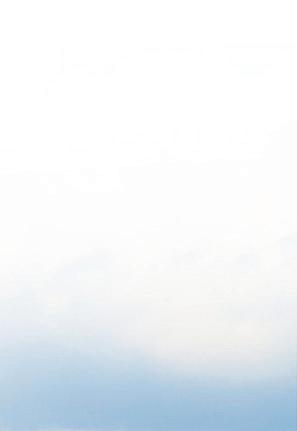





At SD, we know speed is important, but we also know that consistency, reliability, and genuinely global coverage are what really count. Purpose-built for business aviation, our ground-breaking Plane Simple® antenna series supports productivity, entertainment, and relaxation on the cybersecurity services, and a single resource for your end-to-end connectivity needs from boarding to deplaning. SD, connecting you beyond all expectations.


“ First, everything starts with a ground course and a lot of theory. After this you have to pass the theoretical knowledge test and only then do you start the simulator training.”
the aircraft; theory and practical flying. AAA offers these courses for many aircraft types. We designed courseware and training curriculums that train pilots to the required levels. First, everything starts with a ground course and a lot of theory. After this you have to pass the theoretical knowledge test and only then do you start the simulator training.
This consists of four-hour training sessions in the simulator that is exactly tailored to the aircraft you want to fly. We currently have programs using the following full-flight simulators (FFS). One ATR simulator can be configured for the ATR 42-320 and ATR 72-500, another ATR simulator represents the ATR 72600. We offer training on our new Bombardier Challenger 350/3500 and for the Challenger 650. For the latter, we have a cooperation with Lufthansa Aviation Training, which operates this simulator at its centre in Zurich. Our offer is completed with simulator training for the Citation CJ1+, Citation XLS and Citation XLS+ models from the manufacturer Textron.
Q: Of course, like any simulator business, you benefit from the fact that pilots are mandated to undergo regular refresher training.
MH: Absolutely. However, this is not designed to generate business for us. It is a key safety requirement for all pilots to train abnormal and emergency situations to stay prepared for the very unlikely eventuality. A type rating is valid for a




















Currently, we have two simulators for airline type aircraft and three that do business aviation.


With the latter, we take a different approach. Very often the operator in business aviation will not have flight school approval to train their own people. So, when it comes to getting their pilots type-rated, they come to us. We hold all the approvals required for our simulators.






A small business aviation operator might have four or five aircraft and no trainers. We will do all the training of their pilots for them. The civil aviation authority requires that the operator has compliant training manuals that fulfil the regulations and reflect the requirements for its operation. We say: send us your manuals and we will study them and then replicate the required training using your manuals. That is our strength, as I began by saying, and it sets us apart from the competition.



Clearly, every simulator has to replicate to the last millimetre the cockpit and flying characteristics of the aircraft it models. So, whatever constitutes normal flying for that aircraft, along with everything that can go wrong, can be simulated in training. So, this is why simulator flying is logged just the same as actual flying.


year, then you have to revalidate your rating in the simulator. In addition to the yearly proficiency check every pilot who flies commercially has to train according to their operator’s approved training manual. This includes systems training, special airports familiarity training and so on. So these pilots will go for simulator training every six months.
This recurrent training will consist usually of a one-day theory refresher and two to three days of simulator training, with each day consisting of a four-hour simulator session. The regulators lay out a very strict regime so most operators will have a rolling three-year cycle. Some of the training exercises might be done every year, others will be allocated to each of the three years, with say, six to ten topics being covered each year. Things they will have to train on every year will include elements such as upset recovery training, engine failures and so on.
Our role in this game is twofold. If an airline has its own training organisation, we lease the simulator to their instructors, who come to our site to train their staff.


As this suggests, there is a high demand for places on the simulators. Our facility runs 24 hours a day, seven days a week. Any pilot who holds an EASA license can train with us, and our Textron CJ1+ simulator also has approval from the UK CAA.

Like all simulator businesses, we are audited regularly by our main supervising body, EASA.
A final point I would make is that we are still a small enough company to be very flexible in meeting the demands of our clients. In business aviation, sometimes we will be contacted just three days before a license expires, and we do everything we can to respond and to make the training available.
Q: Michael, how long have you been with Aviation Academy Austria?
MH: I have been in aviation for 25 years now. Initially, I worked with a large operator, then I moved to the training world and ran a flight school. I became partner of AAA 10 years ago and enjoy what I do immensely. It continually hovers between being fun and being a challenge.
We are now at a very interesting stage of the company’s growth. Our next simulator will arrive in 2025. We have already bought the premises alongside ours so that we can grow the business. We are preparing eight new simulator bays which will give us 14 simulator bays in all. Every year now we acquire a new simulator and in the not-too-distant future, we will open a new training center outside of Europe. Like I say, this is a really fun time to be in this business. |BAM









Derek DeCross, Chief Commercial Officer at Signature Aviation, on becoming a leader in private aviation services and on its plans for the future

Q: We can’t assume that many readers are familiar with the history of Signature and its worldwide network. Can you provide a brief background history behind the current global FBO network?
DdC: Signature Aviation’s roots stretch back to 1879, originally operating in the steel and energy sectors, and later transitioning to the manufacturing of automotive and aviation supplies. The shift to aviation services began in the 1980s, and since the merger of Page AvJet and Butler Aviation in 1992, Signature has grown to be the largest network of private aviation terminals in the world. In 2021, Signature Aviation was acquired by a consortium including Global Infrastructure Partners, Blackstone, and Cascade Investment, further bolstering its resources and growth capabilities.








Today, Signature operates over 200 private aviation terminals across five continents, serving private and business aviation guests with unmatched service and operational excellence. Signature is a leader not only in private aviation services but in the overall evolution of general aviation. Signature continues to innovate, expanding its industry-leading network while maintaining its commitment to safety, sustainability, and dedication to an exceptional guest experience at every step of the journey.




“ Today, Signature operates over 200 private aviation terminals across five continents, serving private and business aviation guests with unmatched service and operational excellence.”





































“




We offer a wide




range of services designed to elevate the experience of our guests. Our network provides essential ground services, including fueling, parking, hangarage, and concierge services.”

Q: Let’s look at the programs and services that Signature provides to customers.
DdC: We offer a wide range of services designed to elevate the experience of our guests. Our network provides essential ground services, including fueling, parking, hangarage, and concierge services. Signature’s global network ensures access to seamless travel experiences for guests, with consistent, high-quality service.
But beyond traditional private aviation services, our organization also plays a critical role in real estate management, offering 16 million square feet of carbon-neutral hangar and office space in some of the world’s most desirable markets. Our residents are part of our Resident Premier program, and enjoy high-quality facilities in strategic locations, allowing them to efficiently base and grow their operations.
At Signature, we have numerous programs and platforms to drive value for our guests. We’ve introduced key programs like Signature Status, which rewards loyalty with priority services and added benefits. Our Signature TailWins program allows members to earn points with fuel purchases, which






are redeemable for credits and travel perks. For payment convenience, Signature Pay streamlines transactions across our network, thus simplifying billing for operators.
One of our most exciting programs that was introduced recently is BRAVO by Signature, designed for small and medium-sized operators. It offers fuel discounts and other benefits to help operators successfully grow their businesses. Now, operators who were not able to have a direct relationship with Signature in the past enjoy our Best Price Commitment, with no contracts and no membership fees.
Q: What more can you tell us about the BRAVO program?
DdC: BRAVO is a groundbreaking program specifically designed in collaboration with and for small and mediumsized operators within general aviation. After an in-depth analysis of our customer base and their needs, we recognized that this segment had historically been underserved—not just by Signature but across the industry. BRAVO was created to fill that gap and deliver a unique, hospitality-driven experience directly to these operators.

We are shaping the future of cabin experience for VIP aircraft with in-flight entertainment, connectivity solutions and cabin management systems. Our highly customized solutions give VIP and Head of State passengers the freedom to relax and be productive above the clouds.
















With BRAVO, we aim to foster meaningful relationships with smaller operators, offering them substantial discounts on Jet A fuel and exclusive benefits, which can significantly improve their bottom line. Whether it’s freeing up resources for maintenance, upgrading aircraft, or reinvesting in their businesses, BRAVO empowers operators with tangible benefits. Beyond pricing advantages, BRAVO enhances operational efficiency and service quality, providing our customers with the tools they need to thrive.
What sets BRAVO apart is that it comes with no commitments. It’s a no-contract and free-to-access program. Members of BRAVO by Signature will never need to pay retail for fuel again, and through BRAVO’s Best Price Commitment, they can rest assured that they are receiving access to the best available non-negotiated rates at Signature’s US-based private aviation terminals.





Q: What is Signature focusing on in the near-term and long-term future?
DdC: Our mission remains centered around our guests, along with a specific focus on hospitality.
In the near-term, we are heavily focused on elevating our guests’ experiences and expanding our service offerings. We are continuously investing in our people who are at the heart of the guest journey, as well as refreshing, upgrading, and rolling out new facilities across our network. Likewise, we will continue to build on our innovative programs like BRAVO by Signature, which will be expanded into EMEA and Canada.
From a sustainability perspective, we are also expanding our available SAF supply and investing in renewable technologies,

“ With BRAVO , we aim to foster meaningful relationships with smaller operators, offering them substantial discounts on Jet A fuel and exclusive benefits, which can significantly improve their bottom line.”



SWISS PRIVATE JET is a Geneva-based operator with a Swiss AOC. Aircraft management, charter flights, our extensive network and experience allow us to offer tailor-made solutions, without constraints. Our work is our passion, your satisfaction our priority.



































































































































































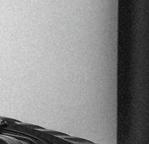














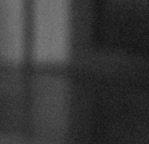



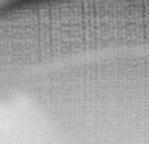



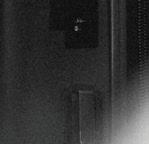








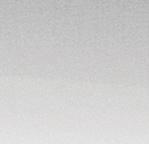











“ One of the biggest challenges is ensuring that our service standards remain consistent across our global network. This requires hiring, training, and retaining the very best people in the business, investing in key digital initiatives for both our guests and team members, and implementing best practices across our 200+ locations globally.”












Long-term, we are committed to maintaining our leadership position as an innovator in sustainable aviation, expanding our global network, and leveraging technology to enhance team member and guest engagement. As we look ahead, Signature remains dedicated to shaping the future of aviation, ensuring we play a pivotal role in advancing both the industry and the communities we serve.









as we did with the recent introduction of the industry’s first zero emissions full electric jet refueler in the United States. We were also recently recognized as a Green Power Leadership Award Winner from the U.S. Environmental Protection Agency (EPA), highlighting our achievement as the first private aviation terminal network to achieve 100 percent green power procurement.













Q: As a final point, what are the major challenges in running a global FBO network?
DdC: Running a global network of private aviation terminals presents several unique challenges, from maintaining operational consistency across different countries to navigating varying regulatory environments. One of the biggest challenges is ensuring that our service standards remain consistent across our global network. This requires hiring, training, and retaining the very best people in the business, investing in key digital initiatives for both our guests and team members, and implementing best practices across our 200+ locations globally. |BAM

















Alexis Javkin, Executive Vice President of Maintenance and Supplier Management at JSSI, on building customer relations
Q: Alexis, can you take us through what you were doing before you joined JSSI, and what attracted you to the company?
AJ: I was a JSSI customer for many years and was very impressed with the level of service and commitment the people in the organization showed. In my previous role, I worked for a large operator in Mexico (Aerolíneas Ejecutivas) as CEO of ALE Service Center and Group Vice President for ALE’s fractional, jet card, and charter business. In my relationship with JSSI over time, it became clear to me that JSSI was far more dynamic than the vast majority of companies in business aviation.

“ Today our product offerings go far beyond HCM programs and include aircraft financing (JSSI Aviation Capital), Conklin & de Decker; Traxxall maintenance tracking (JSSI Software), consulting (JSSI Advisory Services) and parts business (JSSI Parts & Leasing).”
It was striking how many of their people were very highly skilled, with several people choosing to stay with JSSI for decades. That speaks volumes. When I got the chance to join the company, I didn’t hesitate. It was an exciting change for me to become part of this innovative team and evolving organization. A few months into my new role, I continue to be impressed with JSSI’s culture. You get the feeling that everyone is really focused on the job and what they can bring. This makes it a great place to work.
Q: How has 2024 been for JSSI so far?
AJ: This has been an amazing year for the company in a number of respects. We have seen strong results and JSSI’s worldwide footprint has continued to grow.
Of course, there are also challenges as the industry still adapts to the post-Covid era. The business aviation industry grew by some 50 to 60 percent from 2019 to 2021, and such an accelerated level of growth brings its own stresses and strains.
This has affected all aspects of the industry. The OEMs have a very strong order book, and we still see delays with new deliveries, we continue to experience supply chain issues, and MRO slots are tight. There are shortages in technicians and pilots that continue to limit capacity on the operational side for so many players.
JSSI has continued to see growth throughout this period, a testament to the value of the technical team and service organization through these times, always pushing to find solutions. When a client signs with us, they tend to stay. This is much thanks to our technical team and client service, something I experienced and valued as a customer.
Q: JSSI has been constantly expanding the range of services it provides. Can you take us through that?
AJ: JSSI has a full portfolio of services, supporting every stage of the aircraft lifecycle. We can provide support all the way from the pre-acquisition analysis phase, to providing
hourly cost maintenance (HCM) programs, and maintenance tracking software. JSSI has evolved tremendously in the last few years. It’s an exciting time to be part of a business that is now connected to virtually every facet of business aviation. Today our product offerings go far beyond HCM programs and include aircraft financing (JSSI Aviation Capital), Conklin & de Decker; Traxxall maintenance tracking (JSSI Software), consulting (JSSI Advisory Services) and parts business (JSSI Parts & Leasing).
JSSI’s HCM programs are still at the core of our offerings— available for virtually all engines, APUs and airframes—and give customers flexible and affordable tools for managing the costs of operating and maintaining aircraft. Our tech team is the backbone of our entire organization: the service clients buy beyond the financial product. It is up to the rest of us to back up that department and to ensure that together we build strong relationships with customers. This is especially important as the vast majority of aircraft owners do not have technical backgrounds in aircraft maintenance, nor do they ever buy jets to experience issues and delays – a strong technical team is invaluable.
Aircraft maintenance is complex. This is where we come in. Through a simple hourly rate, the owner knows that his or her aircraft is going to be properly maintained and that the cost is a fixed, steady amount. It’s our job to make sure maintenance is performed to the highest quality and safety standards. In other words, we act as the customer’s professional technical advisor – or an extension to their maintenance team.
Q: How do you keep the relationship with the customer fresh and meaningful?
AJ: Customer service is how we differentiate ourselves. JSSI clients have one point of contact for everything they may need: AOG support, part needs, anything where we can assist. We act as the liaison between our customers and MROs: an independent advocate, technical eyes and ears for the customer - ensuring that everything is done appropriately and properly. Ultimately, our customers care



AT ROVANIEMI! JET A1 available through JETFLITE Dedicated FUEL TRUCK for OUR CLIENTS! 24/7/365 FULL SERVICE FBO IN HELSINKI HANDLING | HANGAR | TECH SUPPORT | VIP fbo@jetflite.fi
Tel +358 20 510 2700
JETFLITE is proud to announce a chain of ground handling services at the Lapland airports.
For this winter season full services are now available at:
EMAIL: fbo@jetflite.fi

On top of our everyday VIP class service, we will have dedicated DE-ICING TRUCKS for business jets.
No more waiting at the end of the line!


Tel +358 20 510 2700

about aircraft uptime. We provide the necessary tools and financial programs to keep their aircraft flying.
We have evolved as an organization to meet needs far beyond HCM programs, and the additional services we can provide have in many ways deepened and strengthened our client relationships as well.
Q: Does JSSI cover all ages of aircraft?
AJ: We have a diverse and broad customer base – including clients that operate both new and legacy platforms. Our HCM programs cover aircraft of all ages - across virtually any make or model and asset type. This is unique to JSSI and our independence.
The key to supporting out-of-production models lies in the experience of our technical team, dedicated product line specialists’ group, and in our inventory strategy. When we see gaps in the supply chain, we invest in parts and rental assets to support both our clients and the broader industry. Our Parts & Leasing business has grown significantly over the last 10 years, and today we have over 100,000 parts in stock, multiple strategic warehouse locations, and over 70 engines and APUs in our rental pool.
The vast amount of data on engines and airframes that we have built up over time helps us be proactive on behalf of our clients, utilizing our unique maintenance data to plan for future maintenance and trends.
Q: The global economy has still not recovered fully from the pandemic. There are still ongoing supply bottlenecks. How is that affecting JSSI?
AJ: The last few years have presented an opportunity to further improve our response and agility dealing with challenges in the supply chain. JSSI adapted quickly to the growth surge that the industry experienced coming out of Covid. Our large network of MRO vendors and internal team of over 100 technical advisors and product line specialists located around the world is a huge advantage: making sure we have coverage everywhere our clients are, and local relationships to solve problems quickly and efficiently.
Best of all, we are not a company that labours under a huge decision chain. We can move fast as new ideas or issues present themselves. We take pride in our flexibility, innovation, and problem-solving - all core to JSSI. This makes us optimistic about our ability to respond to whatever challenges and opportunities lie ahead. |BAM













Karim Berrandou, CEO and founder of G-OPS, on the 20th Anniversary of his founding his international ground handling operation, and on building G-OPS into a full-service, one-stop-shop for business aviation clients

Q: Karim, can you take us back to the founding of G-OPS in 2004, and the growth of the business from its roots in France?
KB: I began my career in business aviation with a major Air Charter broker at the Paris office, providing air charter services worldwide. The company had an integrated ground operation department, and that grew to be my area of responsibility.

It was a great and diversified experience. It gave me an overview of many of the different aspects of flight operations, including CAA permits, slot management and, of course, global handling services with multiple actors.















Iceland Jet Center
with our main operation at Airport Icelandair Group, with and enjoyable and we guarantee short turnaround VIP lounge
state-of-the-art facilities





“ I understood that there was a gap between the requirements of business aviation customers and the existing offer. This was a niche I knew we could fill, so I decided to create a dedicated service for air operators in France.”



After six years of this rich experience, I understood that there was a gap between the requirements of business aviation customers and the existing offer. This was a niche I knew we could fill, so I decided to create a dedicated service for air operators in France.
The concept consists of providing a single focal point to meet and manage all the needs expressed by operators and airlines throughout their network.
My goal was to help business aviation operators by simplifying their handling set-up. We’d cover everything from ground operations and permits to slots and whatever else was required to ensure a smooth operation and excellent services for their passengers and crew. Moreover, I was hugely encouraged by the fact that France is the Number One European market for business aviation traffic. I saw this as a huge opportunity.
Q: What were the challenges in getting started?
KB: One of the first things I had to grapple with was navigating through the different administration obligations. Furthermore, Aviation is a heavily regulated industry, and everything is documented and audited. This led me to swiftly set up internal processes and workflows to comply with the requirements.
Ultimately, I put a lot of energy into making my vision an operational reality, and our consistency is what convinced operators to put their trust in G-OPS.
Today G-OPS is the leader in France. The journey has been two decades long and has been marked by some memorable milestones.
One of the more momentous of these was the formation of G-OPS’s sister brokerage company, HIGH PROFILE in 2009. HIGH PROFILE is separately staffed and runs as a separate entity from G-OPS.
We have opened regional offices over the years in key areas in France. These include the Cote d’Azur and the Alps. In order to offer our service more broadly, we have also opened an office in Morocco to cover the African region.
More recently in 2023, we have launched FBO services in partnership with DC Aviation, positioning ourselves at the strategic airport of Nice LFMN, the second busiest in Europe.
In all this, we have kept true to my initial vision, which was to bring a 360° solution for all aviation needs, starting with


Authorities, crew, passengers, aviation underwriters, and aircraft brokers are increasingly interested in how aircraft operators and airlines implement their security risk management.
www.dyami.services





















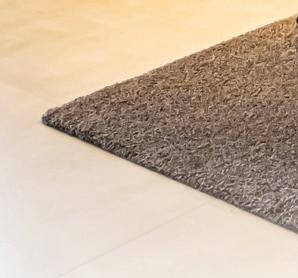





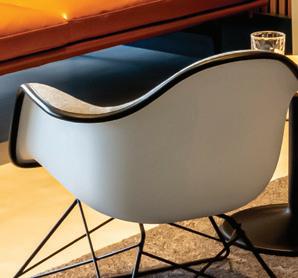

“ More recently in 2023, we have launched FBO services in partnership with DC Aviation, positioning ourselves at the strategic airport of Nice LFMN, the second busiest in Europe.”




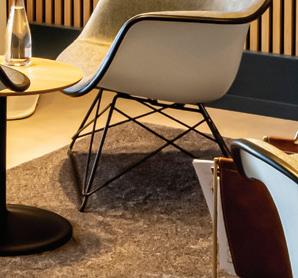


business aviation. I am delighted with the fact that this year sees our 20th anniversary, celebrating two decades of growth and excellence. I am eager to see what is ahead.
Q: What is involved in running a successful groundhandling business?
KB: The major challenge, which also became our major strength, was to build a company that is customer-centric through and through. This means understanding what the customers hope for and expect, and what they need. You have to go beyond a simple “response” mode.
Our added value is to focus intensely on bringing peace of mind and ease to the operators, pilots, diplomatic personnel, and so on. We do this by centralizing all their operations and communications into a single point of contact.
This allows each actor to focus on their main mission, and to have a segmented approach where each step is taken care of by an expert (pilot, handler etc.)
The customers’ expectations are constantly growing, so we need to ensure we are up to it.
We are in a fast-paced environment where constant changes are needed, and services need to be made in shorter periods.




















To achieve our aims, we need to maintain a high-performing team with a thorough knowledge of the evolving environment, which is increasingly dependent on additional norms. We also need to be in constant dialogue with local authorities and airport management with respect to compliance and processes.
Q: You are dealing with high-profile clients and diplomatic clients. I imagine that holding data securely is critical?
KB: Of course, we have to manage personal and sensitive data on a daily basis. We take the greatest care to ensure that our cyber internal policies are regularly challenged by experts to remain compliant with applicable regulations and for our IT systems to be secure enough to withstand any threats.
Q: France has just hosted the Olympic Games. How challenging was that for you?
KB: We are often faced with peak seasons in terms of traffic, linked to either seasonal travellers or specific events. The Paris Olympic games and the 80th commemoration of D-Day were a perfect example of this.
We organized and prepared for the Olympics months in advance and set up a dedicated task force to deal with it. But we are accustomed to large peaks in demand. This season, with the Olympics, we saw record-breaking traffic, up some 20% compared to the high points in previous seasons.





We are very often solicited for these types of events because France is a land of diplomacy. Also, G-OPS is recognized and authorized by the relevant authorities to provide support during these diplomatic events.
Our approach is to streamline our operations through internal audits and careful project planning. Based on this approach, we recently appointed a Customer Experience Director and a Diplomatic Relations Director. Their main mission is to enhance customer experience and satisfaction through their expertise and availability.
At the same time, we maintain a strong focus on training, focusing on specific client-centric and service-centric internal training, and
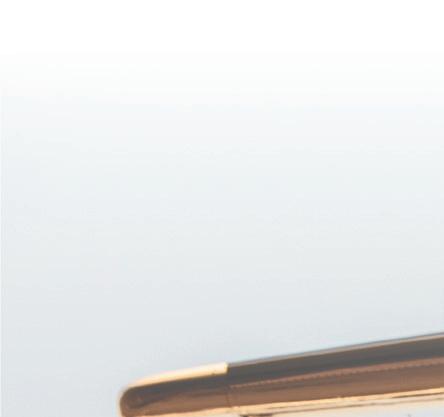







validation processes. We also have a strong focus on technology and have implemented advanced IT tools, powered by AI.
As a matter of fact, a few years ago, we implemented a multichannel communications platform which combines email and all communication channels such as WhatsApp and SMS. Now, regardless of what channel a client uses to communicate with us, everything is held centrally and efficiently.
Our AI-powered communication system delivers exceptional service at scale and is able to handle high email volumes. It allows us to respond faster and to provide customer support with a human touch.
We are focused on achieving the highest levels of integration. Our approach is to integrate the solutions on the market in a way that allows us to benefit from the best of each. We create the best solution adapted to our needs and our clients.
Q: Let’s look at how G-OPS has expanded its operations to the point where it now has a worldwide footprint, with an office in Morocco.




KB: G-OPS is recognised as the leading French trip support company, with a prominent position in the EMEA region. We have regional offices across France, including in Paris, Nice, Bordeaux, and Chambéry. These are the busiest areas and from these geographical positions, we can cover the entirety of France in the most effective manner, with a physical presence and on-site supervision. We have been able to establish ourselves as the reference locally.















We also have a strong presence in continental Europe with key partners, and we have an out-base in Morocco. Our historic presence and longstanding partnerships have allowed us to gain the trust of local authorities. The fruit of this is that in 2021 we were granted a licence to provide flight supervision services to major airports across the Kingdom of Morocco.
I would add that wherever our clients have a need, we can support them, even on the other side of the world.
In short, providing great services and building a good reputation leads to growth. We also actively participate in different exhibitions, shows, and conferences around the world.
Q: Can you provide a brief account of the variety of services you provide for business aviation?

KB: Historically our expertise lies in ground operations support with services such as on-site supervision, handling support service, fuel supply, concierge service, operational authorization management, parking and slot coordination.
Our vision has always been to provide a comprehensive solution answering all the needs of our customers. This has pushed us to develop specific solutions for our customers’ needs (such as board-to-board solutions for transfers between commercial and business flights).



Q: What of diplomatic and military flights? How different are they to manage?
KB: Over the years, G-OPS has perfectly understood the unique and evolving needs of diplomatic flights and has developed a comprehensive solution tailored to meet these specific requirements.
Military and diplomatic flights, like business aviation, require highly specialized services, but the focus and priorities can differ. These operations often involve sensitive, time-critical missions with high geopolitical stakes, where discretion and confidentiality are key. Rapid response is essential, as last-minute changes are common, and the ability to adapt quickly is crucial.
Reliability is the top priority for these clients, and G-OPS delivers this through consistency in service quality. Early on, G-OPS established personalized Service Level Agreements (SLAs) that define response times and monitor performance to ensure continuous improvement. Transparency is also fundamental: clients are fully informed of the subcontractors involved, maintaining clarity throughout the process.


Over the years we have expanded our range of services to include aircraft brokerage and chartering with the creation of our sister company, HIGH PROFILE in 2009. We added flight planning services at G-OPS. In 2023, we partnered with DC Aviation and won a tender to provide FBO services at Nice Airport (LFMN), leveraging our historical presence and knowledge of this key European region. This year, we have fully refurbished the facilities to provide the highest quality experience to our customers.
We are now able to provide a holistic and expert service to our customers in business aviation as we combine the roles of trip support provider, broker, and FBO services.

Diplomatic flights benefit from more flexible airport slot restrictions, but communication remains critical. G-OPS opens direct lines between the diplomatic entity and its dedicated agents well in advance of the mission. To manage this growing segment, G-OPS appointed a Diplomatic Flights and Relationship Manager to oversee these operations and to act as the key contact between the protocol and the airport environment, ensuring that all the specific expectations are met.
Because of these efforts, G-OPS has become a trusted name in diplomatic flight support, gaining the confidence and approval of Authorities and showing a strong understanding of the required protocols.




By combining transparency, agility, and a commitment to high standards, G-OPS ensures that every mission is executed flawlessly, meeting the unique needs of military and diplomatic clients with efficiency and professionalism. |BAM






Mark Kammer, Co-Founder and Operations Director at Dynamic Advanced Training, talks to Anthony Harrington about the vision behind the region’s leading aviation Safety Training organisation
Located in the Mohammed bin Rashid Aerospace Hub, Dubai South, Dynamic Advanced Training, a subsidiary of Khansaheb Group, stands out as the premier independent provider of aviation safety training across the Middle East, North Africa and South Asia (MENASA) region.
The company’s cutting-edge facility offers comprehensive Safety & Emergency Procedures (SEP/ESET/Crewmember Evacuation) training, including both theoretical as well as hyperrealistic, hands-on training, using industry-leading simulators and training equipment. Dynamic is the first facility of its type in the MENASA region to offer Private, Business and Commercial Aviation Safety Training all in one place.

AH: Mark, you have a fantastic establishment with a number of expensive cabin simulators that provide crews with a real hands-on experience. How did this get started, and what was it like launching just as Covid shut down the world?
MK: We could hardly have picked a more challenging moment to open our doors. It was July 2020 and the world of aviation was nearly at a standstill. Nothing flew. This place put the tumbleweeds to shame it was that quiet. It was like we got clearance to take off and someone bombed the runway in front of us.

After all the years of blood, sweat and tears, it was very frustrating. All commercial aircraft were grounded. The only flights were humanitarian or cargo, and just a little bit of business aviation. We had just launched our business aviation product that was specifically designed for the sector and that was a hard enough challenge to get across.
The natural assumption folks made was that we were just another legacy, predominantly classroom-based, safety training centre, where much of what you were taught was general and would not be applicable to your specific aircraft type.



So, we had to educate our customer base, who were understandably sceptical to start with. For example, when we told them that in order to customize the training to suit their needs and that therefore we would require relevant selection from their manuals, aircraft layouts, and the type of emergency equipment on board, we were met with disbelief.
The UAE’s Covid response was absolutely stellar. They achieved a great balance between the commercial aspects and the safety aspects. This meant that people could pretty soon travel to us for training. However, there was still a problem because their home countries would make them quarantine when they returned. So, for months, we just watched the cash burn, with very little revenue being generated.
At the same time, aviation authorities gave operators multiple waivers for their scheduled safety training. Crews could do recurrent training from home via videos or online courses. We witnessed poor proficiency and lack of proper knowledge at times, once things opened up and people started coming through our doors for training.
They would admit that they were really rusty and needed to sharpen up. In fact, I never met any actively flying aviation professional who thought that online training was a substitute. They would all admit they were just ticking a box and that, at best, it was complementary.







AH: So how did you get the centre set up with all the simulators?
MK: It happened because I am not a big believer in taking the path of least resistance and I had already had the opportunity to conceive, design and build a couple of cabin service trainers. I was lucky enough to meet my business partner, Bilal Tahboub, who was one of the co-founders of the Emirates’ SEP training centre in the mid-80s.
He is one of the most passionate people you will meet on the subject of achieving great learning outcomes in the area of cabin safety. He is very black-or-white and speaks his mind. The fact that an aviation authority will approve a particular training regime is not enough. It has to result in great learning outcomes, i.e. proficiency, for everyone going through that training. Regulatory compliance Bilal regards as simply a by-product of designing an effective safety training regime, with the appropriate equipment.
From the start, he and I agreed that we would not copy/ paste conventional approaches and instead provide what we call reality-based training that would provide real handson experience. Reality-Based Training (RBT) is a training approach that incorporates elements of stress and pressure to simulate the physiological, psychological and emotional challenges of real-world situations. In other words, RBT aims to inoculate trainees against the negative effects of stress, improve their performance under pressure and develop their own resilience, adaptability, and confidence in their abilities.

“
“Reality-Based Training (RBT) is a training approach that incorporates elements of stress and pressure to simulate the physiological, psychological and emotional challenges of real-world situations.”




























































Investing in the simulators required to bring that about is a natural corollary of that approach. Purpose to tool and not the other way around. Bilal and I spent years researching, discussing, and arguing. In fact, we still respectfully argue to this day a couple of times a week, but we always achieve common ground and with 98.9% of trainees rating their training as “excellent”, I truly believe we are providing aircrew with the correct learning journey they yearn for and deserve. And there is still more to improve on.
The germ for the whole idea happened when Bilal and I had a meeting with a guy from CAE who was complaining about the lack of business jet specific safety training in the UAE. When he left, I said to Bilal, I don’t know much about aviation safety training yet but I am adept at engineering or managing solutions, so what would stop us from building our own training centre, with a range of purpose-built safety training simulators? Bilal just looked up to the sky, smiled and said “Finally”…
The third part of this operation is the Khansaheb Group, the family has known me my whole life. They believed in us, put their trust in us and that ultimately enabled us to execute the dream. They supported us through Covid and basically kept us going as we slowly started picking up one satisfied customer after the other. We have a 95% conversion rate once a prospective customer visits Dynamic, the difficulty was and still is to get them to visit us first.
AH: When you set up this kind of training establishment, that is not country-exclusive, you have to deal with a plethora of regulatory bodies. How do you manage this?
MK: Managing the regulatory challenges of setting up an aviation safety procedures training establishment with the intention to operate internationally requires a comprehensive and strategic approach, as the aviation




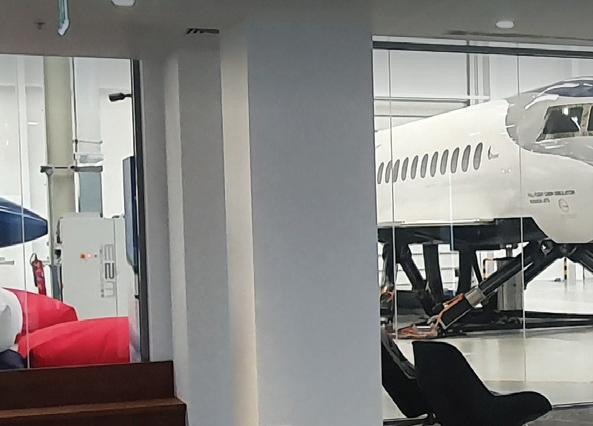
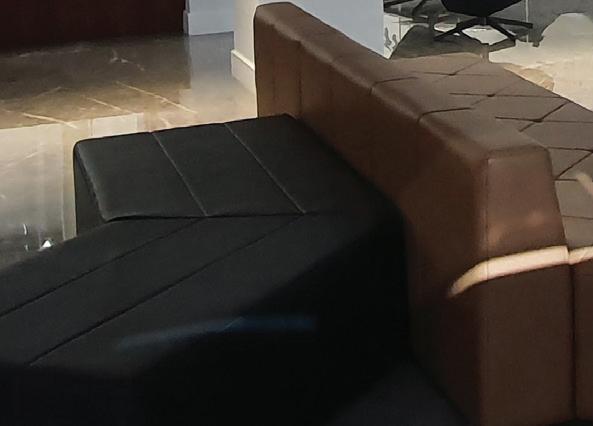
industry is highly regulated and subject to different standards across various countries.
We established and created a core global training framework based on ICAO recommendations and adapted this core curriculum to comply with the specific regulatory requirements of different countries. Our take-off point was getting approved by our local general Civil Aviation Authority, bearing in mind that Dynamic was the UAE’s first independent Cabin Crew Training Organization.
Then we moved globally and customised training programs that are compliant with FAA and EASA. Designing, specifying and building our cutting-edge full motion simulators and the carefully designed training programs formed the basis to meet global training needs. Our training programs and simulators are certified by local and many international civil aviation authorities.
Our institution employs highly skilled training experts who are extremely knowledgeable and able to design any training program compliant with any specific regulatory body requirements. But I will admit that it is a big challenge and regulators do often require more time than we or our customers often wish for.
Now, the UAE is more stringent than EASA when it comes to crew safety training, e.g. all business jets require attested and type-rated cabin crew onboard. Under EASA or FAA regulations, the business jet operators get to determine the level of training. Some may choose to only use Inflight Service Personnel with no safety training at all, and they are regulatory compliant although this would cause me sleepless nights. Some operators choose to do this training in-house, and it is blatantly obvious to us that they do not have the right aids to do the job to the standard we take for granted.

“ “We have a 95% conversion rate once a prospective customer visits Dynamic, the difficulty was and still is to get them to visit us first.”










Award-winning Concierge Cybersecurity & Privacy PlatformTM designed to protect you and your family.
The truest form of opulence is not what you show the world, but what you can keep to yourself. Introducing an exclusive membership for the discerning few who understand that the greatest luxury is in the sanctity of privacy. BlackCloak concierge personal cybersecurity services are designed to protect your most valued assets and provide peace of mind.


have to put their training into practice, lives are at stake. It is like the best safety insurance policy.
AH: So, you have set out to go well beyond legacy safety training centres?


“ We have a sea survival pool with adverse weather effects such as waves, wind, rain, fog, thunder and lightning.”



For example, we have a sea survival pool with adverse weather effects such as waves, wind, rain, fog, thunder and lightning, so we can take crew training in the ditching model to a different level. The lifelike scenario training is challenging for trainees but enables us to correct life-threatening mistakes instantly, so trainees can learn from them. We want them to succeed, and it is the trainer’s responsibility to adapt to their individual learning style and pace. Our goal is that when trained at Dynamic they are proficient. We always keep, front and centre, the fact that when emergencies happen and crew
MK: Absolutely. Very often the training props that you find in a legacy training centre that specialises in training commercial crews flying Boeing and Airbus airliners, just do not align with what someone for example, in a Challenger, Gulfstream, Falcon etc. deals with. Also, it is much easier to deliver classroom/ theoretical training than it is to deliver hands-on training. This is why in conventional training, typically 85% is theory and only 15% is hands-on. Should be the other way around and delivered in a blended format, not just theory block first and then a bit of “pretend and imagine” practical thereafter. The best compliment we get here is when someone goes through our training and then says: “This is the first time I’ve been through safety training without yawning!”.
We follow the 3H training model, Head, Heart and Hand. The Head, means you acquire the knowledge you are training for. The Heart part is that you live and feel the experience, with the simulators we provide. This answers all the ‘why am I doing this’ queries and makes it very realistic. The instructor facilitates training so trainees can conceptualize it, with correction and guidance where necessary. The Hand part stands for repetition, muscle memory, motor skills etc. It means that the mental model becomes robust, it becomes something you instantly recall, can act on, that you have the right feel for. The body does not go where the mind has never been!
AH: Can you give us an idea of the duration of some of these courses?
MK: Business aviation operators tend to do the full sequence of modules in one year. This means that their crews will do the fire fighting, ditching, general safety, doors and exit management, CRM, aviation security and dangerous goods courses all in the same year.
Pilot SEP training only takes a day. If they take the first aid module, that is another day. Pilot CRM is another day and so on. For business jet cabin crew, it gets a little bit more complicated, recurrent SEP and First Aid is done in 3 days. For initial it depends but let’s say 5 days or 6 days for SEP, 2 days for First Aid, and then potentially some more days. It really depends on the customer’s requirements. We also offer blended VIP Service training, but this is not a course that involves regulatory approval.
AH: How quickly did demand pick up after the pandemic eased?
MK: It was gradually progressive and, at times, fluctuated between immediate and postponed demand. Business aviation safety training was a new product and a new concept to the market. So, we talked to all the business jet operators we could













“ The best compliment we get here is when someone goes through our training and then says: “This is the first time I’ve been through safety training without yawning!”.”


reach as soon as business jets started flying again. We got our regulatory approval in June 2020, so we were ready to go, but we had to hunt down and sell to customers, one-by-one.
Gradually word of mouth started working for us as crews went through our facility. The Civil Aviation guys got very positive feedback from our clients. Today, demand is good, out of our 100+ customers about 60 are business jet operators, large and small, training with us. People are recommending us, and we are getting enquiries from further afield. It also helps that many business jet pilots do their training at CAE or their aircraft require MRO services to be performed in Dubai.
AH: Any business from the US yet?
MK: That is starting, we hope and expect the potential to grow. There are operators with crews here in the UAE that we have provided training for, who have based aircraft here from the States. We have one of them auditing our facilities now. Europe is similar. EASA accreditation requires a presence in Europe. As we do not have any representation in Europe currently. We do not yet have EASA approval so we cannot offer EASA certification to cover the cabin crew, but we are in discussions with a European CCTO, with a view to coming under their EASA approval. If that works out, we will operate as a satellite of their European operations. We believe we are very well situated now, are nimble to adapt to the dynamic business jet environment and look forward to growing the business and taking safety to operations by creating one ambassador at a time. |BAM









Chris Clayton, Commercial Manager at London City Airport Private Jet Centre, talks to Anthony Harrington about London’s iconic airport

“ There are a number of airports with steep approaches, but our approach is unique and challenging, especially given our location in the heart of London. We’ve worked closely with key OEMs like Dassault, Bombardier, and Gulfstream.”


AH: Chris, can we go back in time a bit and talk about how London City faired in the opening decade of the 21st Century, then look at where we are now?
CC: Back around 2002 senior executives in the City and across London were using business aviation more and more. Canary Wharf was making a huge impact. There was a high demand for private jet flights from the banks and financial businesses. We were ideally placed to cater for this need.







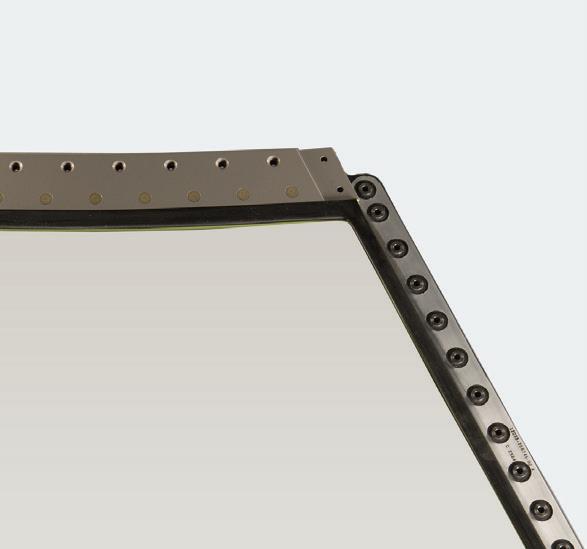






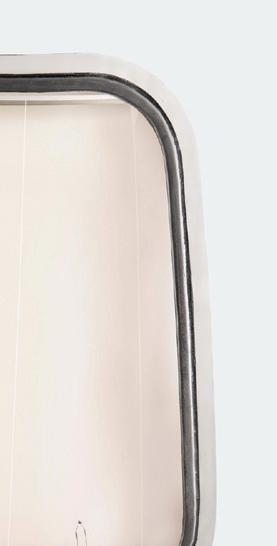







































So for the next five years, before the global financial crash of 2007-8, we had up to 85 jet movements a day on average. It was a very busy period, especially when you consider how small our apron is here. It took a lot of planning and skill to keep everything moving.
Then the 2008 recession hit, and it had a profound impact on us. At that time, there was a strong focus on who was flying on private jets, and many corporate businesses began to reassess how often they were utilizing them. The scrutiny led to some changes in the way these jets were used, with a noticeable shift in behaviour.
We saw a reduction in the number of daily jet movements. Then, as we proceeded through 2010 and 2011, there was a clear trend towards bigger business jets taking off and landing at London City. The demographic of aircraft sizes just got larger and larger.
This shift towards larger jets helped balance out the drop in overall aircraft movements, as bigger jets take up more apron space than several smaller ones.
AH: Given London City’s famous steep approach, how closely do you liaise with the OEMs to ensure they prioritise enabling steep approach capabilities in their models?

There are a number of airports with steep approaches, but our approach is unique and challenging, especially given our location in the heart of London. We’ve worked closely with key OEMs like Dassault, Bombardier, and Gulfstream. The focus has always been on account management and ensuring their aircraft were ready and fully capable of operating into our airport.
So now the headline new models from these OEMS all tend to be steep approach capable. The G600 and the G500 all now have their certifications for London City. That is perfect for us and we have seen a real increase in flights from North America.
AH: How do you think you are doing, as against the competition from the other airports around London?
CC: As of now, around 84% of all the business jet aircraft types that operate into London use London City Airport. This is a significant increase compared to what we would have seen 10-15 years ago. We’re also seeing a 6% year-onyear increase in movements, largely driven by charter flights and long-range jets, particularly from the US and beyond.
AH: What do you see as your biggest challenges going forward?









CC: I work very closely with all the manufacturers. Dassault started off the enthusiasm for steep approach capabilities in larger business jets somewhere around 2010. They wanted every aircraft off their production line to be certified for steep approach landings.









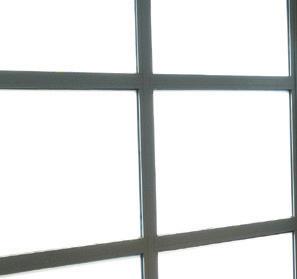



CC: Business travel has been slower to return postpandemic than originally anticipated, but on the flip side, we’re seeing an influx of new customers who now require their own business jets to work and travel. Charter flights and ultra-high-net-worth individuals (UHNWI) who need to access London are becoming more frequent users once they realise the value our airport offers.





“ As of now, around 84% of all the business jet aircraft types that operate into London use London City Airport.”




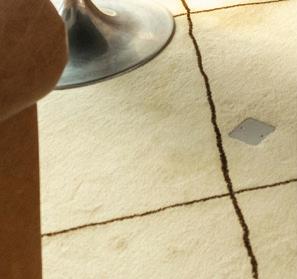
























Saint-Exupéry Airport (LFLL/LYS) based, SPACE Executive Handling specialty : corporate, VIP, government and ambulance flights. any requirement quickly and reliably. team is dedicated to make your life easier, but we can achieve much more for you!
Lyon Saint-Exupéry Airport (LFLL/LYS) based, SPACE Executive Handling specialty includes : corporate, VIP, government and ambulance flights.
HANDLING SERVICES :
We fulfill any requirement quickly and reliably.
Passenger and Crew Assistance
Our team is dedicated to make your life easier, but we can achieve much more for you!
Passport and Customs Assistance
GROUND HANDLING SERVICES :
ground transportation in VIP cars
Passenger and Crew Assistance
Passengers and baggage transfer to main terminals, St Exupéry railway station and
Passport and Customs Assistance
Comfortable, fully equipped lounges
Catering services
Interior and exterior aircraft cleaning services
Airside ground transportation in VIP cars
Liaision with Fuel Supplier (A1 Jet fuel)
Passengers and baggage transfer to main terminals, St Exupéry railway station and helipad
Booking of limousines, taxis, hotels (with rate), car rental, aircraft, helicopters
Conference rooms for on-site meetings
Weather and NOTAMS briefing
Maintenance’s Oganization
Booking of limousines, taxis, hotels (with crew rate), car rental, aircraft, helicopters
Cargo handling / Warehouse
Conference rooms for on-site meetings
Transfer to the Alps ski resorts (limousines, 4WD, helicopter)
Transfer to the Alps ski resorts (limousines, luxury 4WD, helicopter)
PERSONAL CONTACT :
YOUR PERSONAL CONTACT :
Tel. 24/7: +33 661 616 904
+33 661 616 904
space@spaceaero.net
Email: space@spaceaero.net FURTHER
FURTHER INFORMATION UNDER

Lyon Saint-Exupéry Airport (LFLL/LYS) based, SPACE Executive Handling specialty inc corporate, VIP, government and ambulance flights.
We fulfill any requirement quickly and reliably.
Our team is dedicated to make your life easier, but we can achieve much more for you !
GROUND HANDLING SERVICES :
Passenger and Crew Assistance


Passport and Customs Assistance
Airside ground transportation in VIP cars



Another aspect we’re addressing is the perception that we’re an expensive airport to land at. While we did have a high demand for apron space, which created premium pricing, the current landscape is different. We’re not necessarily the most expensive option anymore, and in some cases, we’re actually more affordable while still offering premium connectivity.
We’ve been working closely with our airport colleagues to provide more flexible solutions for parking and space management, including utilising other areas of the airport. We now have remote stands that are well-suited for larger jets that need more space, maki ng us a practical choice for many customers.
AH: What are the biggest business jets that you can comfortably accommodate?
CC: While we don’t handle widebody aircraft, we regularly see Embraer Lineage 1000s, Bombardier Globals, Gulfstream 650ERs, and Global 7500s landing here.
AH: Can you take us through the requirements for pilot certification to land at London City?
CC: The flight crews have to undergo simulator-based steep approach training and they have to maintain that training regularly. There is a good reason for this. If an aircraft is on an easterly approach, pilots are absolutely amazed when they bank around the Gerkin. It looks to them like they could lean out of the cabin window and touch the building!
It is completely different from a normal landing approach and it challenges their overall skill set. Demand for steep approach training has really ramped up as customers buy G650s, G500s and G600s. Simulator companies use London City as the poster child for flight safety and steep approach training. So with all this happening, landing at London City Airport is becoming less and less of an issue and is part of the skillset of a growing number of pilots.
AH: Obviously, you have your location right in the City of London as a huge attraction. What other unique advantages would you point to?
CC: Our USP is our 90-second proposition. For the vast majority of the people landing or departing from London City, they can walk through our lounge and be on the aircraft in 90 seconds or less. The aircraft pulls in very close to the FBO. Similarly, for those landing from abroad, we have onsite Border Force personnel and it takes very little time to move through the airport and out to your vehicle.
AH: What has been happening recently?
CC: Perhaps most importantly, we have upgraded our security facilities. In May this year, we installed the latest CT3 X-ray machines and body scanners. We put these into the main terminal last year for commercial passengers and it was a great success. Customers can leave their liquids and electronics in their bags, which greatly speeds their transition through security. We have now adopted that technology in our Jet Centre, and we were the first FBO in the UK to do so. |BAM



















Revolutionise your aircraft handling with Mototok’s robust and easy-to-use electric tugs. Specifically engineered to excel under the heaviest loads, our tugs utilise a hydraulic platform that offers superior strength and durability compared to other technologies. Hydraulic systems provide smoother, more precise control, particularly under extreme weight, ensuring safe and stable aircraft manoeuvring in even the most challenging conditions. Even in the case of a complete system failure, the hydraulic emergency release function ensures that the aircraft can still be safely released from the nose wheel platform within seconds.


















Experience the power of hydraulic control, designed for handling even the heaviest loads with ease.




Operating the tug is intuitive and straightforward – all functions are easily managed via remote control, with no need for cumbersome manual strapping beneath the fuselage. This reduces the risk of damage to the aircraft, providing a secure and efficient handling solution.
Mototok represents German engineering excellence, offering the highest levels of safety, reliability, and robustness in daily operations.
Contact us now to learn more about the unrivalled benefits of Mototok!
Contact us.













Eric Schouten, CEO and Founder of Dyami Security Intelligence, on providing operators and owners with potential life-saving knowledge
Q: Eric, you and your organisation are experts in assessing and disseminating geopolitical risks. How did you get started?
ES: The idea for Dyami, that is, for a service dedicated to providing geopolitical risk information to business aviation, arose out of my work for the Dutch equivalent of MI5 and MI6, the Dutch General Intelligence and Security Service (AIVD). I was responsible there for aviation industry security awareness, focused on the terrorist threats out there and on geopolitical issues that could pose a threat to aircraft. This included staying abreast of the threats to aviation that conflict zones or near-conflict zones could create.




“ “I noticed at the time that large commercial airline operators generally had access to more or less timely intelligence information. However, smaller operators and in particular folks in business aviation had very little access to the intelligence needed to make proper risk assessments on routes they were going to fly.”
I noticed at the time that large commercial airline operators generally had access to more or less timely intelligence information. However, smaller operators and in particular folks in business aviation had very little access to the intelligence needed to make proper risk assessments on routes they were going to fly.

So, if you take the instance where the owner has a business meeting in a troubled part of the globe, he might assume that the operator who is managing his jet, and doing the route planning, has all the safety and security information he needs. However, the person doing the route planning at the operator’s end is not a geopolitical analyst, so a lot of false assumptions about the safety of the client and crew are very likely to be made.

This was the insight that led to me founding Dyami, with the aim of helping operators with risk assessment including travel safety. After all, operators have both a legal and moral responsibility for the safety of both the client and the crew. Yet very often they are operating with no more than what they and their staff can glean from the TV news or newspapers. These sources, like Google, will tell you what has happened, not what is likely to happen in the immediate or near future.




US: +1 914 738 1200 UK: +44 20 3286 3212 Toll-free: +1 800 828 8283 reservations @limousinesworldwide.com dispatch @limousinesworldwide.com

We are a providing services in Whether you need ground transport for a , quiet travel between business meetings, or just want to show up in style to your night on the town, we have you covered We provide for each reservation and our customer service team is friendly and knowledgeable.








Q: So you saw a knowledge gap in the market that needed to be filled?
ES: Very much so. As a government intelligence officer, my task and my passion was to make aviation more secure. I was in charge of aviation intelligence when flight MH17 was shot down over Ukraine in July 2014. That really hurt.
Sometime later, I had to explain to the Investigation Board how the process of risk assessment works and where the gaps were. As a result of that loss, airlines now routinely route around conflict zones. At the time it was assumed that international passenger aircraft were safe. MH17 showed how wrong that was.
“ “Our competition in what we do is largely from AI tools that can provide a range of alerts. However, our great advantage is that we are a human-centric organisation and we provide proactive, real-time advice and guidance. That is a huge differentiator for us and one that our clients really appreciate.”
Q: What has the response been from the business aviation sector to your founding of Dyami and the service you provide?
ES: It has been excellent. As a business aviation operator, this is a service that can really differentiate you in the eyes of your clients. They will appreciate that you are actually investing in their safety.
Our competition in what we do is largely from AI tools that can provide a range of alerts. However, our great advantage is that we are a human-centric organisation and we provide proactive, real-time advice and guidance. That is a huge differentiator for us and one that our clients really appreciate. We can dig into the details in a way that goes well beyond what you can get from an AI alert service.
Q: How big a team do you have now?
ES: Dynami consists of a staff of 20 people. In addition to our risk assessment services, we also do risk management training and travel security assessments, along with destination and overflight assessments. Importantly, we also do espionage awareness training.
I started the building just before Covid struck. During the pandemic, we did a lot of crisis management. For example, we helped to evacuate 300 Dutch citizens from Kabul, and during the pandemic, we helped people to get back home who were stuck in hotels in various places around the world. That is how the social enterprise part of our business started. We help others in need even if they are not clients of ours.
Q: When people think about security in the aviation space, they tend to think first of cyber security. That is not your field, I understand.
ES: No, in general we do not do anything cyber. I understand that when people think of risk management they think of cyber. But we focus on the human element. We act as if we were the in-house geopolitical risk management department for our clients. Senior management in mid and large-size companies are starting to understand the power of geopolitical risk forecasting. To get there though, they need to understand the potential threats facing their organisations and their employees if they operate on a global scale. The world today is a lot more hazardous than it was a decade ago.


This fact is becoming more widely understood. You are seeing organisations today appointing geopolitical risk officers and departments, but you need to be a really large organisation to bear this expense in-house. That is fine if the department is fully funded and staffed, but if you just have one employee that does geopolitical risk management for 50 percent of their time, that is not going to be good enough.
Conventional risk officers in companies focus on operational risk, and transaction risks, they have no expertise in security risks. Safety is more of a science. There are exact steps that need to be taken. Security is more of an art since you have to travel and go about the world, so it is about taking measured risks.
With our clients, we are just a telephone call or a WhatsApp message away. We also proactively deliver warnings because we understand their travel profile and their operation. We know where their locations and points of interest are around the globe. We have warned clients about situations and developing risks, on our own initiative, that they were not aware of.
From the aircraft crew’s perspective, if you are flying to an area that they may consider risky, it helps a lot if you can show them that a full security analysis of the situation has been carried out.



Q: What kind of demand are you experiencing for your services today?
ES: Demand is strong. We work with EBAA and with IBAC. I do speaking engagements to bring home the importance of geopolitical security analysis in the context of business aviation. When people at these sessions understand that we do staff training we get a lot of interest for that as well.
I would emphasise again that the world has changed. Geopolitical risks are intensifying and you need to be able to identify the threats that can emerge in the places to which you intend to travel.
We are not nay-sayers. We don’t try to stop people from travelling anywhere where there is a hint of risk. We are enablers. We help our clients to go to places that may look dangerous to an outsider. It is about enabling them to travel with full awareness and with their eyes wide open.
www.dyami.services
www.linkedin.com/in/ericschouten |BAM
“ “Demand is strong. We work with EBAA and with IBAC. I do speaking engagements to bring home the importance of geopolitical security analysis in the context of business aviation.”



Locations


ALEX SILVA CEO SCR LEATHER INTERIOR CAPABILITY LIST
SCR INTERIOR
Luxury and Productivity in Every Detail SCR is a Certified Repair Station with Extensive Capability List
16/09/24
When it comes to maintaining your brand's image and reputation, only the best will do a customized jet interior not only impresses but also elevates the customer’s flight experience to a new level.
The company transform the interiors of executive jets with high-end furniture, exclusive seats, refined carpets, elegant panels, and state-of-the-art audio and entertainment systems, incredible technology. Every detail is meticulously planned to provide unparalleled comfort and functionality, ensuring an unmatched flight experience.
Exclusivity. SCR combines its expertise with precision and passion, delivering a truly unique and personalized service that reflects the customer’s style and demands.
Limitations: Maintenance of Cabin, cockpit, seats, and baggage interior compartment furnishings, including sidewalls, surround panels, ceiling headliners, floor coverings, panels, partitions, dividers, storage racks, door stairs, cabinets, tables, lavatories, galleys, and passenger service units. All maintenance work to be performed in accordance with current manufacturer's maintenance manual or instructions, as applicable.
01 Engineering Projects: - Certifications, - Majors and Minors Projects, -Modifications
02 Touch-up: - Deep Cleaning, - Adjustments, - Conditioning, - Small Replacements
03 Repair: - Leather, vinyl and plastic, - Veneer and Varnish, Metal, Airstairs, Fabric and carpet, - SOFT GOODS REPAIR (Carpet, Seats, covers and upholstery, Armrest, Window Panels and Dado panel, Sidewalls and headliner panels), - HARD GOODS REPAIR / Re-Finish (Cabinets, Galleys and Vanity, Doors and tables, Plating, Bulkheads and Side ledge).
04 Refurbishment: - Seat covers and upholstery, - Carpet, - Sidewall, - Headliner.
05 Retrofit: - Cabin design consultancy, - Engineering and certification, - Building, installation and support.
06 Maintenance Support: R&I (-Cabin remove and install, - Cockpit remove and install, - Baggage remove and install)
07 Cabin System Modernization: - BONGIOVI Audio System, -Cabin Airshow System, - Galley lights Led, - Cabin lights Led, - Wi-fi System

Salmon with Sorrel Sauce

Medallion of Venison with Dried Fruit

First Chime founder and Executive, Chef Young Park, on forging a unique catering proposition for business aviation
Q: Young, before we look at your unique concept in haute cuisine for business aviation, can you tell us a bit about how you came into the industry?
YP: I was an industry-leading veteran corporate flight attendant for years and saw the opportunity to introduce Westernstyle corporate jet catering in South Korea during the 2018 Winter Olympics. I lived in the US, but being a native of S. Korea and visiting there as flight crew, I realized the limited choices that corporate flight crews


encounter when curating their menu on board to meet the aircraft owners’ and passengers’ expectations. The business was a success, and I built a new kitchen and moved our business to the heart of Seoul, ‘Kang Nam’, offering






corporate aviation catering and a private dining service.
Right around that time frame, an unknown virus started to sweep the world, which was later named Covid 19, and at one










D u ck C onf it w ith Po ache d Pe ach and Yam Duck Confit with Poached Peach and Yam P ure e in Potato Nest Puree Nest



point, Korea was the epicentre of the pandemic. Witnessing the effect of the virus in Korea before it affected the US, I was convinced it was bound to become a pandemic. So, I closed that business before the quarantine and found the smallest commercial kitchen in my local area located in Maryland.
I did not expect any business as no one was travelling at the time and decided to use that time to prove a new concept of corporate aviation catering, which is our ‘Private Chef service for Corporate Aircraft’.
Q: You decided to go for a total focus on one customer at a time, correct?
YP: Yes, the essence of our concept is ‘one client at a time’. That allows us to pay the utmost attention to each client’s culinary and dietary requirements and preferences. At the same time, we specialize in a wide range of international
“ “The essence of our concept is ‘one client at a time’. That allows us to pay the utmost attention to each client’s culinary and dietary requirements and preferences. At the same time, we specialize in a wide range of international dishes.”
dishes. This enables us to respond promptly and precisely to each client’s requirements, no matter where they are flying to or coming from.
Because of that attention to detail on each order, we are very scrupulous about not overbooking orders. Clients are advised to contact us as soon in advance as possible to check on the availability of our kitchen to meet their request.
Q: What else differentiates you from a conventional corporate aviation catering company?
YP: The essence of our business concept is for anyone to hire a private chef for their flight. The whole idea is a bespoke service for each business aviation client. One notable difference is that we cook for the passengers but package it for flight attendants and pilots who will stow it in the galley.
Q: How have things been since you opened? Is demand for your services growing?
YP: Yes! I am very conscious of the effects of a rapidly expanding business and the potential downside of that so, my focus is consistent, high-quality service, with growth that has been steadily increasing year-over-year.
Business has been increasing at a rate that we moved out of our starter kitchen last year to a larger kitchen and in doing so have embarked on another very exciting endeavour. We are working with Two Michelin-star Chef, Gérard Pangaud. He has created a corporate aviation-specific menu and trained all our chefs, including me. It is a privilege to be personally trained by him.
Q: How did you feel about starting small right in the teeth of a pandemic?
YP: Covid made everything difficult. While I was running the catering business, I also had to fly to make ends meet. I’m a firm believer that success doesn’t come without sacrifice, and the pandemic period taught me to be patient and humble. I figured I’d start in a very small way, with minimum overhead, and we literally grew one client at a time. Clients who used my service in Korea would use my service when they would visit the Washington, DC area. We were also fortunate to cater to a couple of foreign countries’ air force











“ “As of now, 90% of our clientele are Part 91 accounts. However, we are looking to expand to charter companies. We are the first privately owned corporate aviation catering company in the USA to be able to offer Michelin Star service to our clients.”

l ate of B e e t s T hre e Way s Plate Beets Three Ways

aircraft and that helped a great deal in our early days. We are grateful for their trust and continued support. The major airports around here that we cater to are IAD, DCA, BWI, and the surrounding Washington DC metropolitan area.
Q: Apart from those Air Force customers, is the client base largely comprised of corporate accounts?
YP: Yes. As of now, 90% of our clientele are Part 91 accounts. However, we are looking to expand to charter companies. We are the first privately owned corporate aviation catering company in the USA to be able to offer Michelin Star service to our clients. We are open 24/7, and as I stated earlier, all our chefs, including me, are personally trained by Chef Pangaud, so the ultimate advantage of using our service to those who seek legitimate Michelin Star cuisine is that we are available to provide exclusive service on demand, any hour of the day.



Q: You also have private dining as another aspect of your business. How does that work?
YP: Yes, this is a proven business concept from my experience in Korea. Granted, the Pandemic cut the life of that service short but I am excited to bring back this very unique ‘Quiet luxury’ service available to distinguished clients and our facility has enabled us to outfit a luxury private dining room. While you can get a private dining experience at some fine dining restaurants, you are restricted to the menu they offer to all their other customers. The difference with our private dining concept is not just that the room is exclusively for the use of you and your guests, it is that the meal is curated to your exact requirements. It is a unique meal for you, prepared to your specifications and to the highest standards. My goal is to bring the exclusive luxury meal and hospitality service that is conducted on the private jets to our dining room.
DWC, Dubai Airshow Site
MEBAA Show, the Middle East’s premier business aviation event, returns this December for its 10th anniversary edition bringing the business aviation community together to take advantage of the significant growth in the region.


























Q: At one point you were the culinary world’s youngest chef in Michelin history to win Two Michelin Stars; I am sure you have had a lot of o ers and other opportunities to continue your culinary journey. What was your main reason for sharing your menu creation at First Chime?
GP: Maybe some chefs got the two stars younger than me but at that time I was the youngest. I am no longer working and I am retired and I enjoy sharing my knowledge with people who share the same vision as me. I teach once a week at local Community College to be sure that the younger generation is learning precious techniques.
Young is a perfectionist who wants to make food and service of quality, which was my philosophy so I want her to succeed and I bring my experience into our team.
Q: What was your aim when you created your menu for private jet clientele?
GP: Even though I was not familiar with the concept, my idea was to bring a Michelin Star experience to private jet customers. Cruises are


starting to serve high-quality food. So why not private jets? It seemed perfectly possible, although, of course, there are dishes you cannot serve, such as a souffle for example.
Q: You are the rst two Michelin-star chef to introduce your cuisine to many di erent corporate jet owners and operations. Was there any new challenge you experienced that was di erent from creating a menu for a brick-and-mortar luxury dining business?
GP: There is a big difference. Usually, a chef in a Michelinstar restaurant follows his inspiration and the customers come to taste his cooking. In this case, you have a wealthy clientele who knows what she wants. You need to write a menu to cover most of the tastes of the clientele. Chef Park is more experienced than me and gives me some information. Like I said before there are dishes which are technically difficult to serve on a plane.
Because the chef is not the one making the final plating you want to be sure that it is not complicated. You want a simple but sophisticated food.

Q: Any thoughts you’d like to share with First Chime’s clients who are anticipating the launch of your menu?
GP: I would tell them what I used to tell my children when they were young: “Taste the food before you make a judgement,” so please taste what we are doing, it is boutique jet catering, not industrial catering. You will enjoy it, I trust. |BAM






Because every moment counts, get global high-speed connectivity with Gogo Galileo. Learn more: gogo.to/91c
